HIFIMAN Prelude Pre / Amp – Bold Leader Headphone Amplifier
HIFIMAN Prelude is a $2499 USD full Class A Headphone Amplifier, with a Mos-Fet High Current Output, which can convert even the single ended input to fully balanced, with ALPS Potentiometer, and a whopping 10W of power into a 32 OHM impedance. We are reviewing the leader of Amplifiers today, and putting it to the test against the AMPs in the best alternatives, including Smyth A16 Realiser (4000 USD), Analog Audio AAdac (4000 USD), iBasso DX320 MAX Ti (3499 USD), Feliks Euforia (2000 USD) and Violectric HPA V340 Amplifier (2000 USD). As this is literally the leader of power amplifiers in power and current delivery, we will also be exploring pairings with Crosszone CZ-8a Enhanced (1700 USD), HIFIMAN HE1000Se (3500 USD), Audeze LCD-5 (4500 USD), Sennheiser IE900 (1499 USD), Soundz Avant (1390 USD) and Campfire Bonneville (1399 USD)

Introduction
Following the immediate popularity that our written review exploring the HIFIMAN Goldenwave Serenade achieved, I knew it was time for me to work on posting the Prelude review, especially after my inbox has been flooded with questions about it and whether it is a considerable upgrade from the Serenade. HIFIMAN really outdid themselves with those two products, and they are quickly becoming best sellers, at least from how many of you purchased a Serenade almost instantly after reading my review and are happy with the decision. As an Amazon Influencer, I earn from qualifying purchases, and using the purchase links in my reviews helps me maintain this website and Youtube Channel. I thank HIFIMAN for providing the sample for this review, in exchange for my honest opinion.
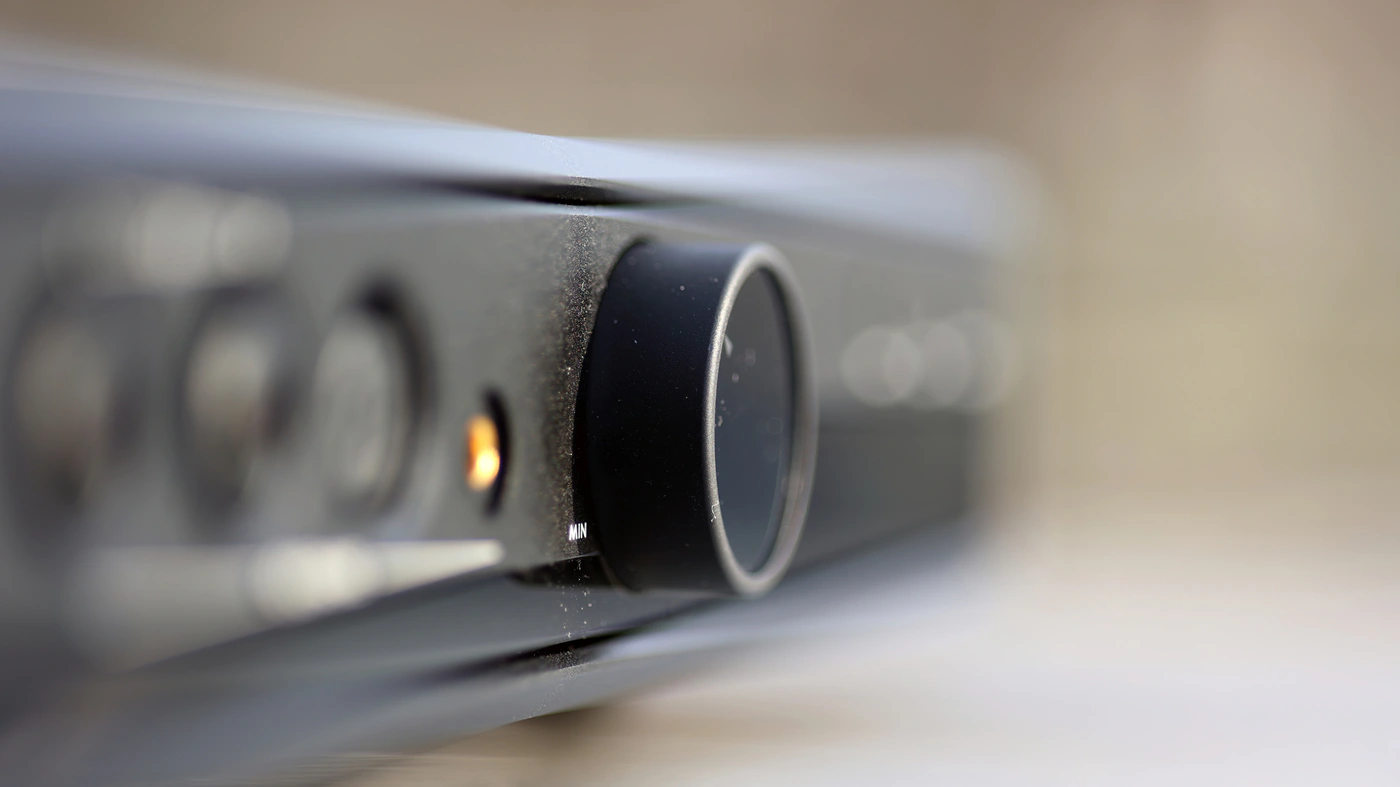
PROs – Outstanding bass presentation, solid build quality, Zero Self Noise, Strong, bold and dense bass, musical, fluid and layered midrange, intimate soundstage which makes music engaging and gives you the 1st row experience with every track, superb impulse response that keeps music snappy, clear and crisp, without creating any kind of harsh textures, humongous amounts of driving power, full balanced headphone output, can drive Headphones and IEMs, planars and dynamics, everything is at its fingertips, including speaker setups when used as a preamplifier.
Cons – Gets warm during usage, even on low gain it is loud and powerful, so you will have to rely on very fine adjustments using the volume wheel to get volume control if not having volume control from the DAC, the flagship experience comes with a flagship price.
Product Link
You can grab one here – https://amzn.to/3z8zQVT
Build Quality/Aesthetics
The shape and design of the Prelude is even more solid and looks better than the Serenade, the difference in pricing being noticeable in the build. This being said, Prelude is quite larger and heavier, the chassis alone being a solid piece of metal, and the unit bearing a net weight of 6.5 KG. The dimensions are 330x56x260mm, so you can expect a wide, long and fairly thick unit. You may notice from the start that there are no 6.3mm single ended headphone outputs, but this is intentional, as Prelude is a full balanced headphone amplifier, wiring even the RCA input to a fully balanced headphone AMP circuit.
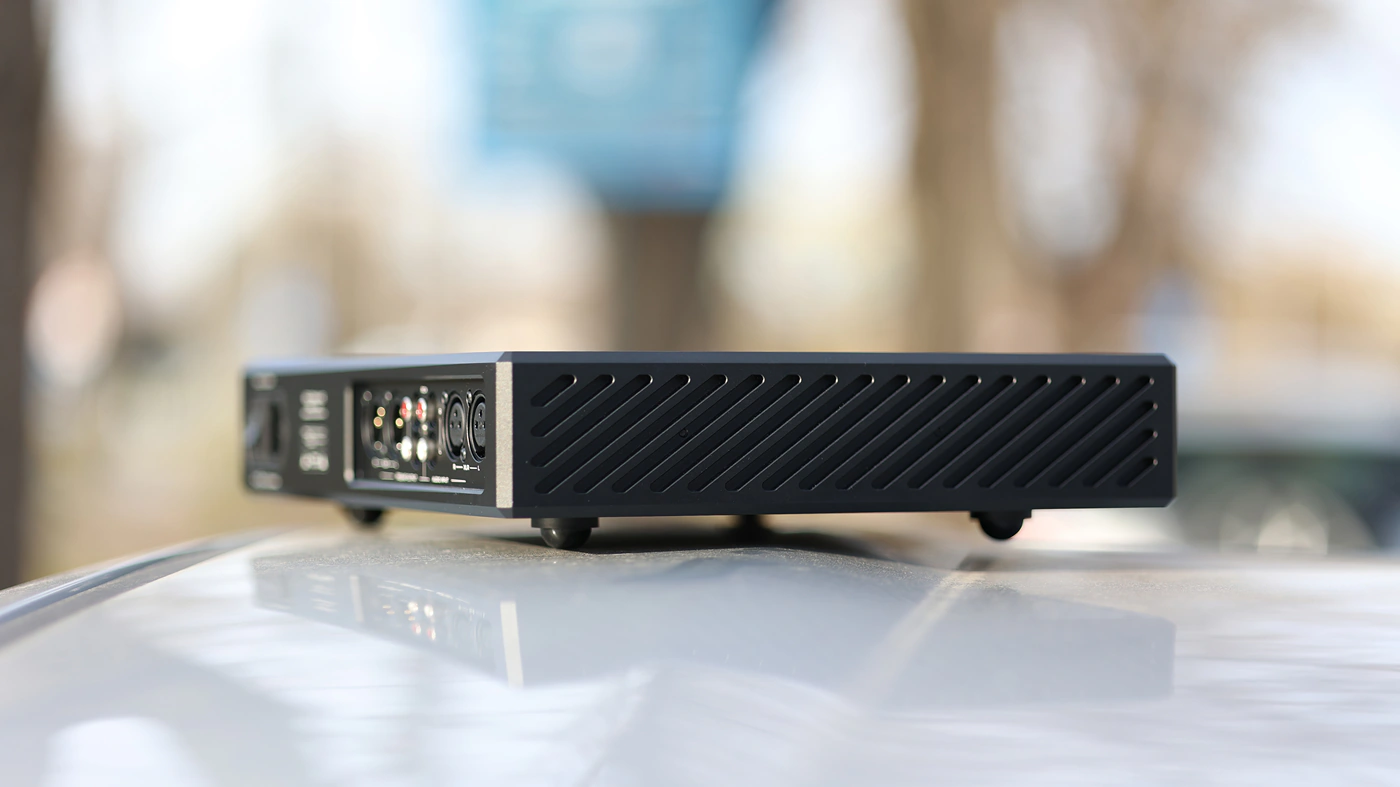
We have a Full Balanced Class A Mos-Fet High Current Output, which includes a conversion circuit that will balance the Single Ended RCA input to the full balanced output of the AMP. The PreAmplifier circuit is completely independent of the headphone amplifier circuit, and it employs a Class A output structure, leading to improvements in control, a lower distortion and a more natural timbre.
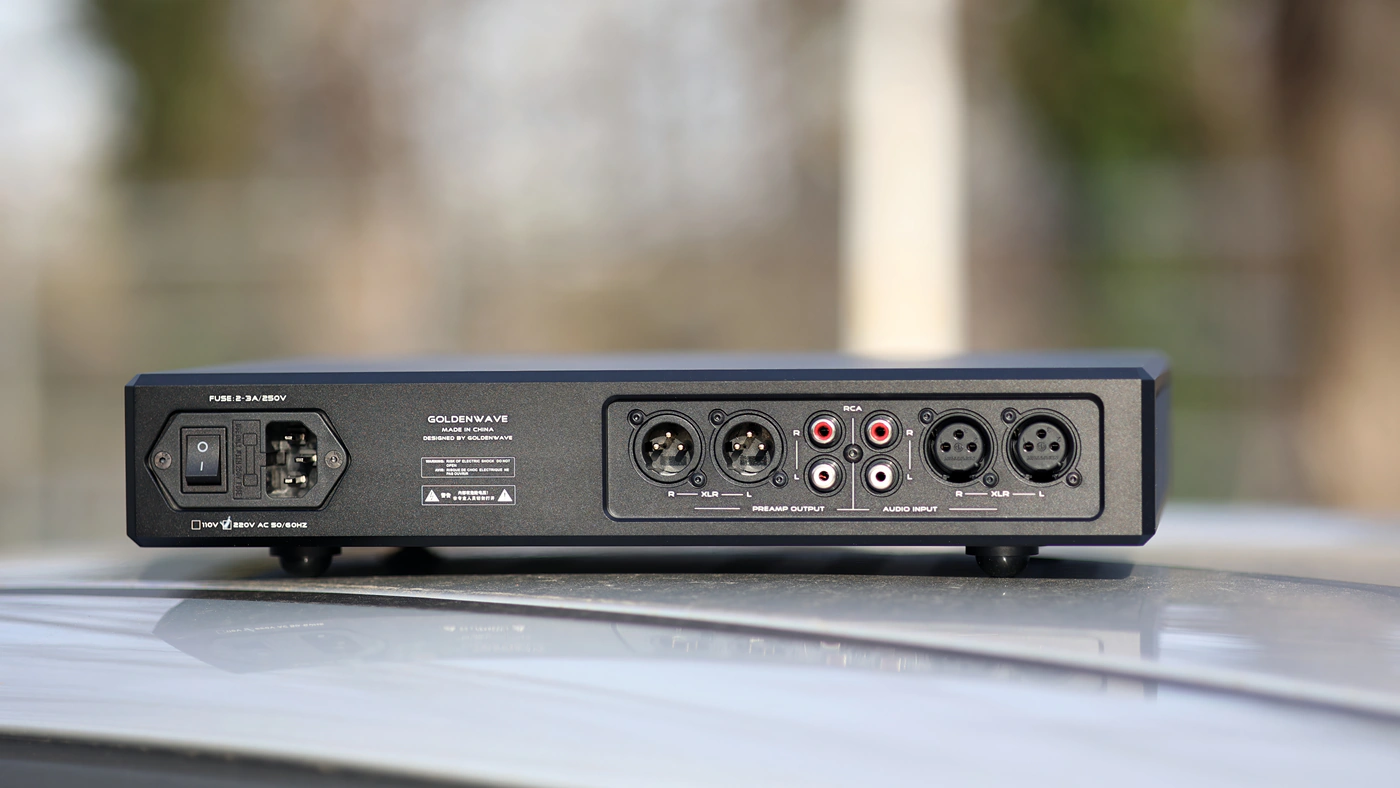
The front of the unit is adorned by a large ALPS Potentiometer with a high damping factor, which feels satisfying to turn, and which offers accurate channel balance from the lowest volumes. On the left of the potentiometer you can find the 3 balance headphone outputs, including the combo 2 x 6.3mm / XLR Jack, with separate Left and Right channels, the traditional XLR 4-Pin balanced headphone output, and the modern 4.4mm balanced headphone output. The three buttons on the upper right corner are the Input Selection, Gain Selection and Output Selection buttons. There is an OLED display right below the buttons, and while with most OLED designs you’d have to be worried about burn-in, as this one stays on at all times, the individual pixels are really large, so there is virtually no risk of burn-in on the display.
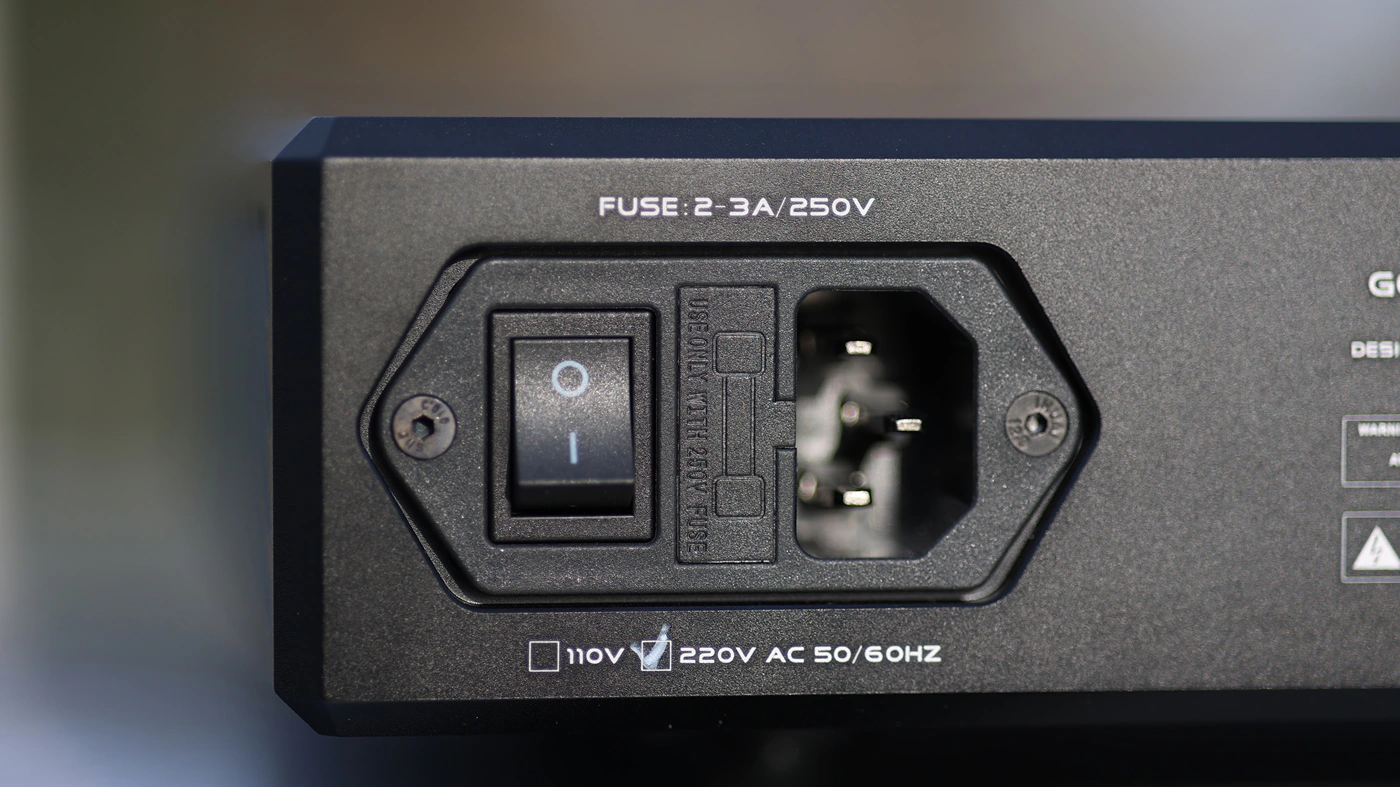
At the back of the unit we have the AC power connector, fuse and on/off switch. We also have the input and the output, each with XLR and RCA connectors. The SNR or Signal To Noise Ratio of the Amplifier is -113 dB at 1kHz, and the THD+N is the lowest I’ve seen on an Amplifier, at 0.0009% on low gain at 1 kHz. The power output at 32 OHMs is simply insane, and we are now at speaker amplifier levels of power, with 10W of power driven in that 32 OHM impedance. The power scales well, and we have 6W for a 64 OHM impedance, 2.5W for 150 OHM, 1W for 300 OHM, and 560mW for 600 OHMs of impedance. You don’t have to worry one bit as both Sennheiser HD660 S2 and Beyerdynamic Amiron will be more than perfectly driven out of the Prelude.

The controls of the Prelude are straightforward, and you can cycle between the two inputs, either XLR or RCA, and also cycle through the two outputs, Headphone Output and Preamplifier. The gain can vary between high and low, and the gain affects both the preamplifier and the headphone output. The two outputs do not work at the same time, and they are separate in the architecture. One big thing that keeps companies from making an all-in-one solution is heat, as Prelude can grow quite hot, but it is easier to cool and keep under control if isolated from the DAC part, while Serenade for example grows about as hot, while having less driving power, as the transformer also has to power the DAC, USB decoder part, and all the other stuff that goes into the Serenade.
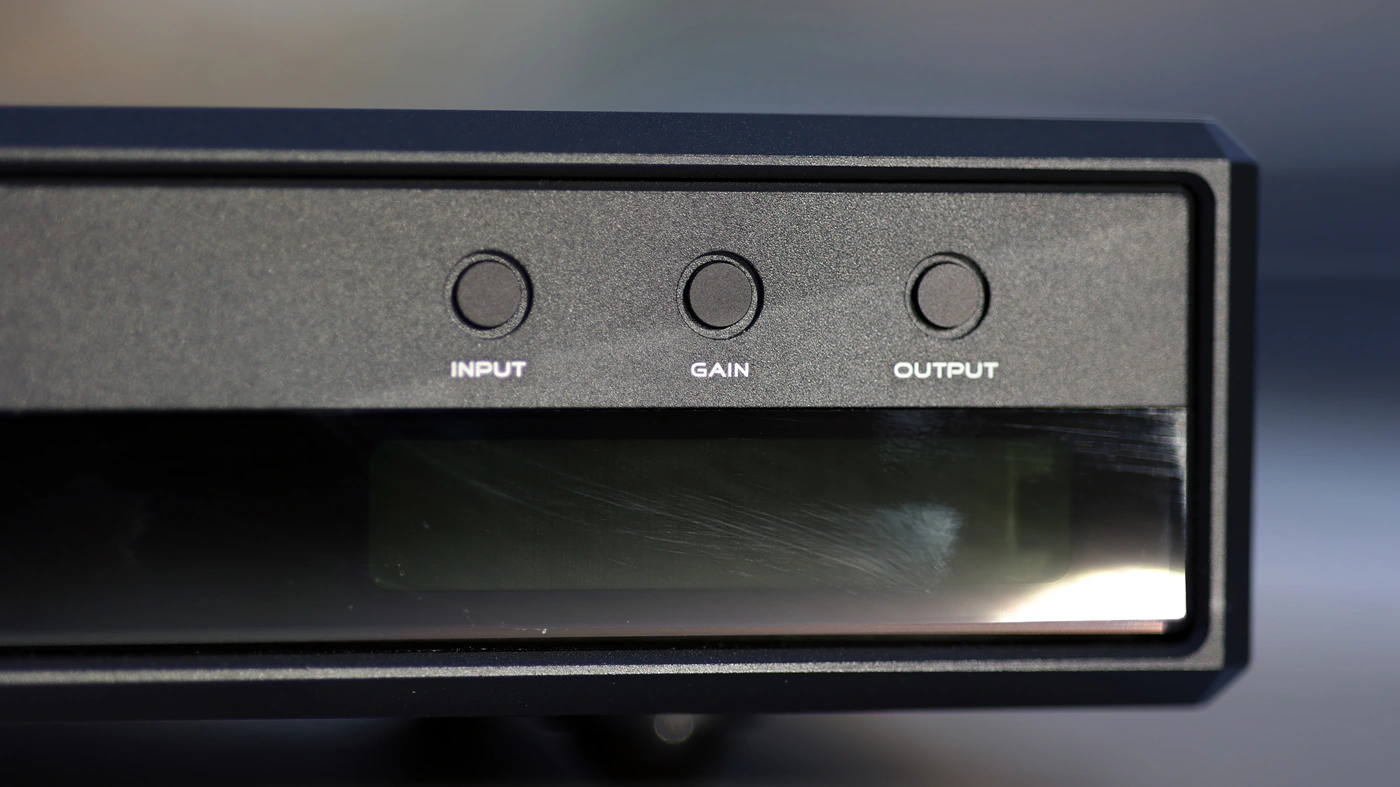
The unit grows fairly warm during usage, but nothing serious like what we’ve seen with Aune S17 PRO, and the tiny display at the front will stay on at all times, with no way of closing it as far as I have studied. The total power consumption is lower than 50W, and you can feel free to add a power conditioner, but it is not needed with the Prelude, as it has a customized high-power, low-noise toroidal transformer, with multi-channel, high-speed, low-noise voltage regulator circuit to supply power to the headphone amplifier and preamplifier part.
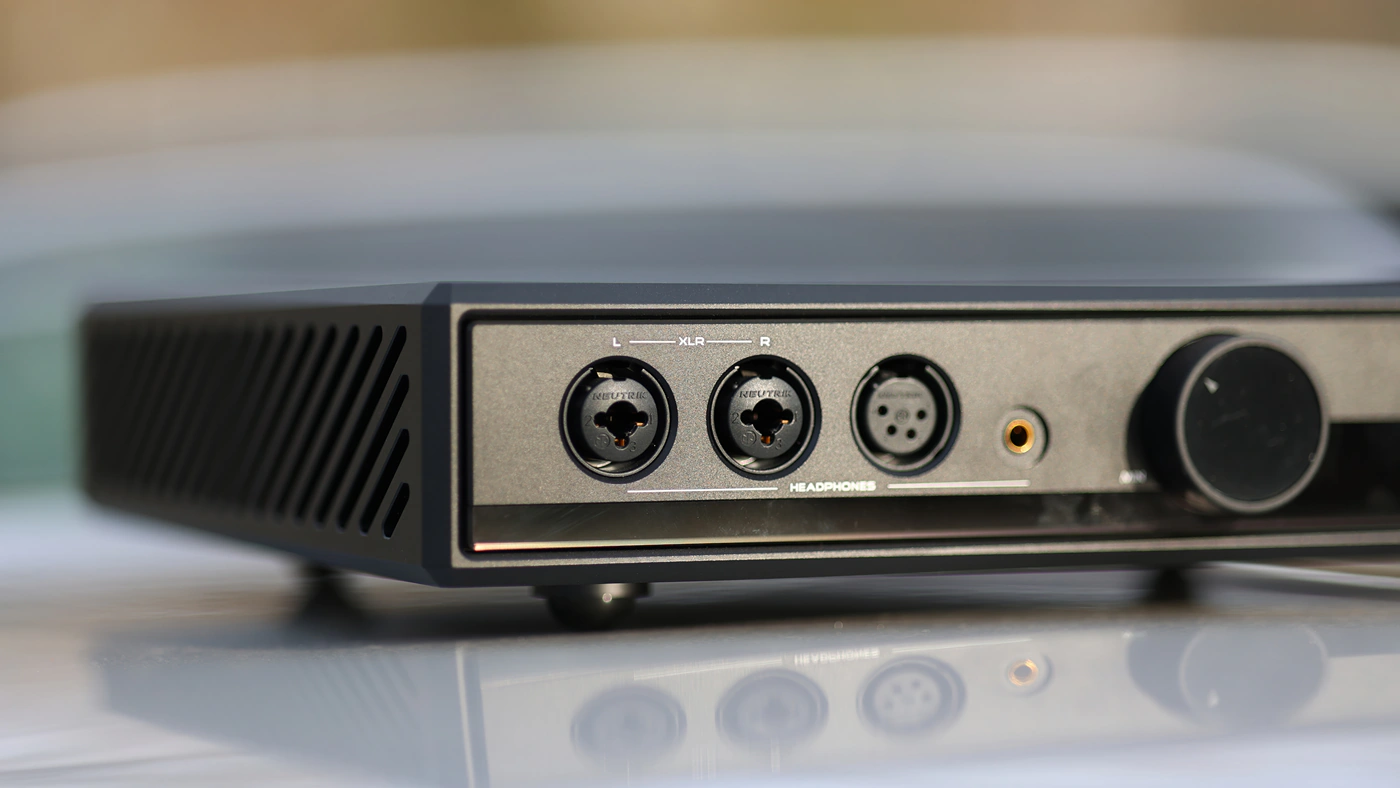
Subjectively, the Amplifier works great, it doesn’t have any bugs or issues, has no self noise, there is no noise audible if it is powering speakers or headphones, while with IEMs, it has a somewhat high output impedance leading to a minimal hissing, which is audible only while no music is playing. The display helps in knowing what gain, output and input the unit is using, and the quoted Frequency response goes from 20 Hz all the way to 50 kHz, with a deviation of 1dB.
Sound Quality
Pairings – To fully test the Prelude, I connected a large number of IEMs and Headphones to it, this being one of my most complete revisits of the good headphones and IEMs I’ve reviewed, and I have to say, it shows exceptional driving power and control for both IEMs and Headphones. On the headphone side, I have paired it with Sivga Peacock, HIFIMAN HE1000SE, Crosszone CZ-8a Enhanced, Crosszone CZ-10, Audeze LCD-5, and Dan Clark Aeon 2 Noire. For IEMs, I have paired the Prelude with Sennheiser Ie900, Soundz Avant, Spirit Torino Twin Pulse Beryllium, HIFIMAN Svanar, and Unique Melody Maven PRO. For headphones, the driving power is insanely high, Prelude can pack an earthquake in HE1000SE, and make the LCD-5 vibrate on my head, giving them a super sharp resolution and clarity. With IEMs, I actually adore the level of dynamics and resolution it has, there is a faint hissing in the background which seems to be independent of the source, but we’re talking about 10 Watts of power at max. As we only have Balanced headphone outputs, balanced cables have always been used during the testing. HIFIMAN has a cross-reference where they call the Prelude Noble, and I can see why, it shows considerably more deep-end effort, rumble and impact than the Serenade and all the other amplifiers in the list. Serenade is still the DAC powering it, and it is very capable, but Prelude improves the whole sound a lot, and will be end-game for a headphone amplifier or stereo preamplifier.
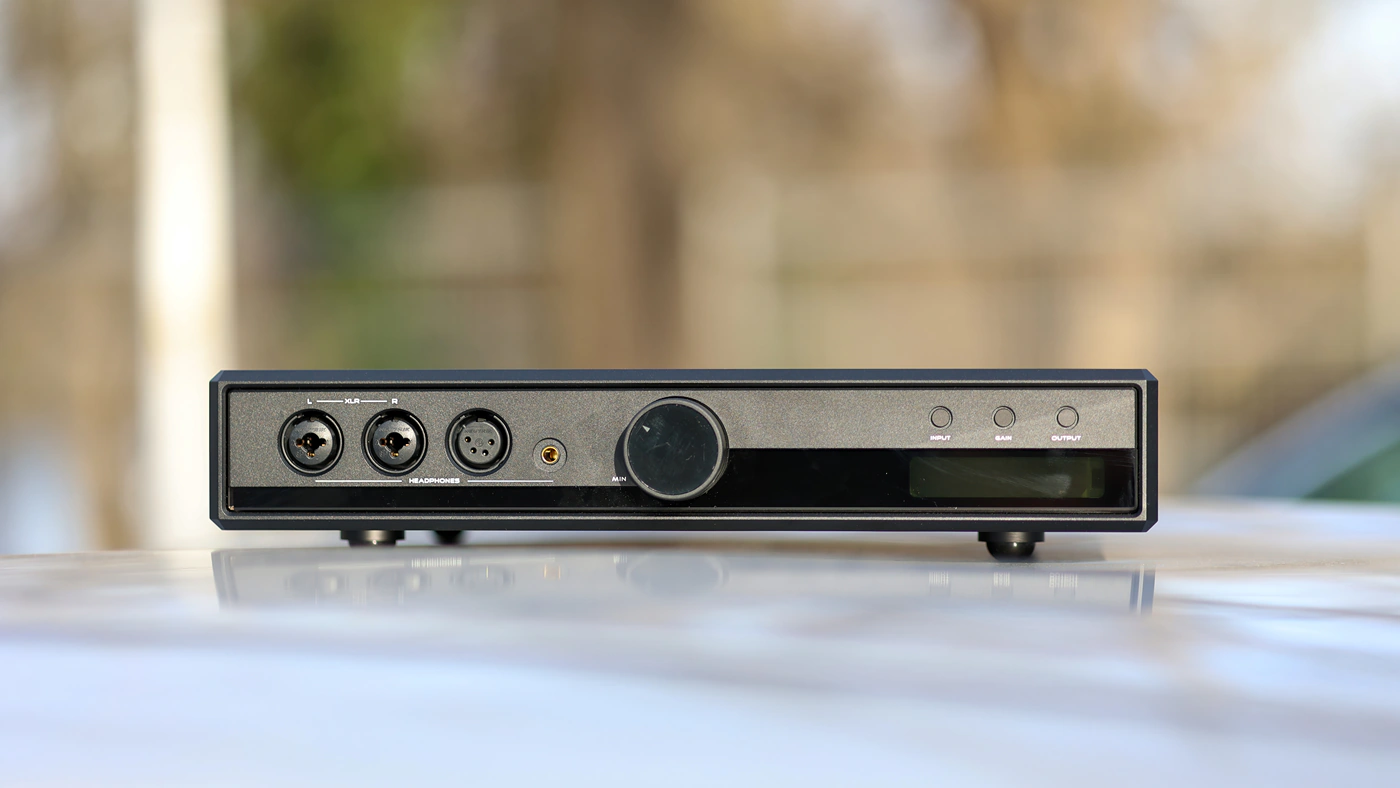
Overall Signature – The bass is always dense, takes a central place in the presentation, and has a rich, voluminous presentation, impact being a central element in the presentation of the Prelude. Female voices are always presented in a sweet, fluid fashion, but while I would call the Serenade always fluid, Prelude is actually tighter, more punchy, more tied up together, and also considerably more forward. I heard this description and I would stick to it, as it actually makes a lot of sense, Serenade is like driving a luxury car, but allowing the car to take you everywhere, while Prelude puts you in a racing supercar, you’re the chauffeur, 1st row of every concert, it brings the forward elements of each song in your face, extracting plenty detail, resolution and presence. The dynamic range is insane, while the soundstage is natural towards ever so slightly intimate, it is well defined, and instrument separation is tack sharp, each instrument is incredibly well defined. The way Prelude plays music is very similar to a huge open-air concert, it draws life into music, puts the action into sound and you are in the middle of the action.
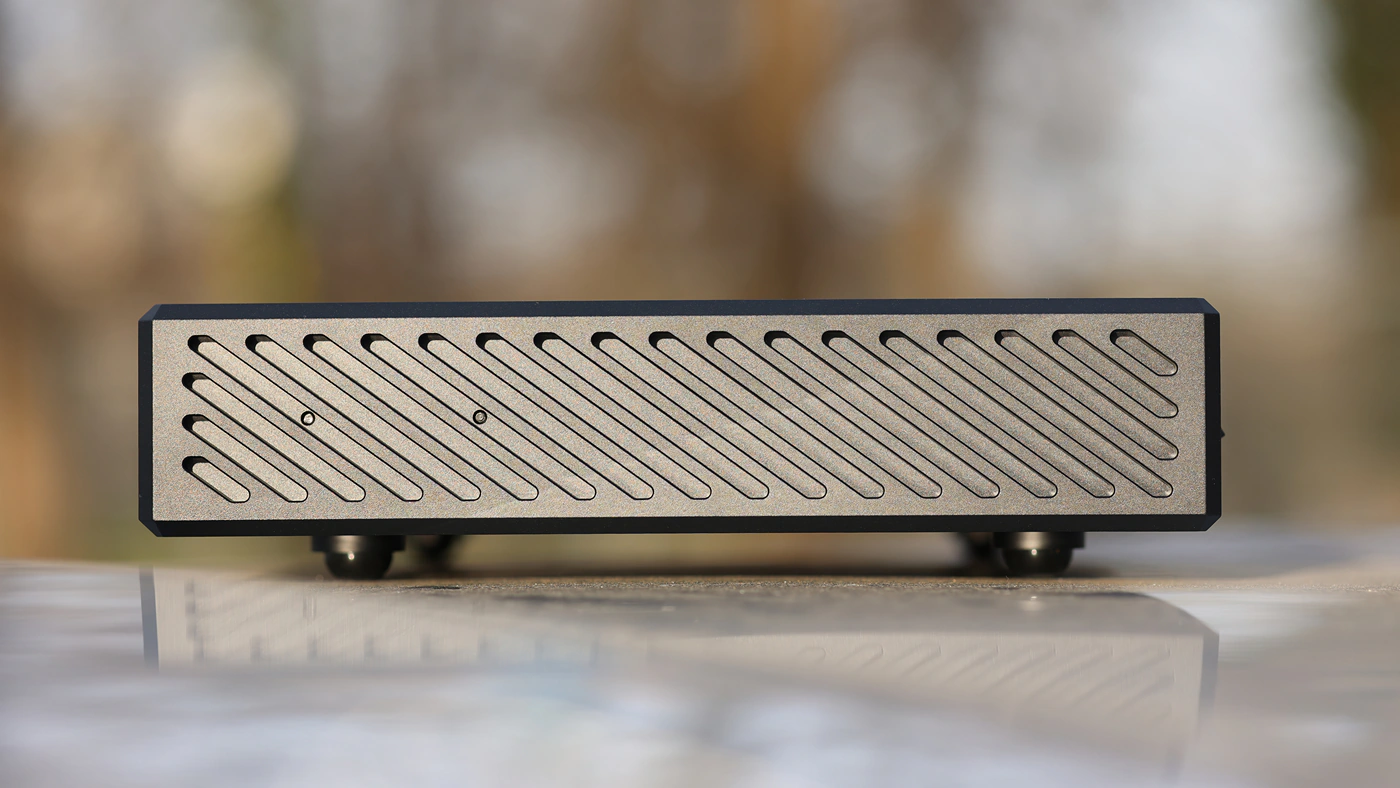
Bass – The bottom end is a central element in the tuning of the Prelude, it dominates the whole sound, gives it body, richness and purpose, Prelude will put life into anything that’s played through it, and in many ways, it sounds more analogue than even most tube amplifiers, the sound out of it just feels warm, but has none of the distortion typically associated with tube, as this is a full solid state amplifier. You will hear a dense, impactful, earthquake-level of bass, with a super nuanced presentation, and the bass will always be a central element, be it in EDM, Dubstep, Rock, Metal Jazz, or even classical. This uniquely deep and powerful sound is actually more true-to-life than what most amplifiers can push, the word noble does it justice, and Prelude sounds exactly as you’d expect a large-scale concert Public Address speaker array to sound like, but inside your earphones. Drums are always a central element of each song, and they are well-defined, even in styles that don’t highlight them too much such as punk or pop. One big effect the Prelude has on my listening habits is that it brings me to enjoy musical, happy songs far more, and it makes metal sound more open and happy, beefier, giving a whole new dimension and depth to enjoyment. A good song to start with is Yfu baby – Xta-Z, where the song starts sweet and airy, with Yfgu’s sweet voice and the background copies very clearly audible, but sounding sweet and tempting. The fat and blurry bass lines are kept under control nicely, as Prelude dictates HE1000Se to paint a controlled, wide, large and dense bassline. The pianos and special synths are airy, ethereal and presented behind Yfu’s voice and the heavy, leading bassline. The song has a sharp and clean treble, but it is not very audible as the song itself has very little information besides a few muted snare sounds all across the song. Two most surprising characteristics of the Prelude are how well it can separate the lead voice, and Yfu’s own voice singing in the background, how it can keep the two so well defined and separate, and how well it handles the rather unique bass of this song. For a more traditional bass that will make any headphone massage your head in a myriad of colors and nuances is also Yfu Baby – YABAI!, where the bass has different nuances, but a much more traditional presentation.
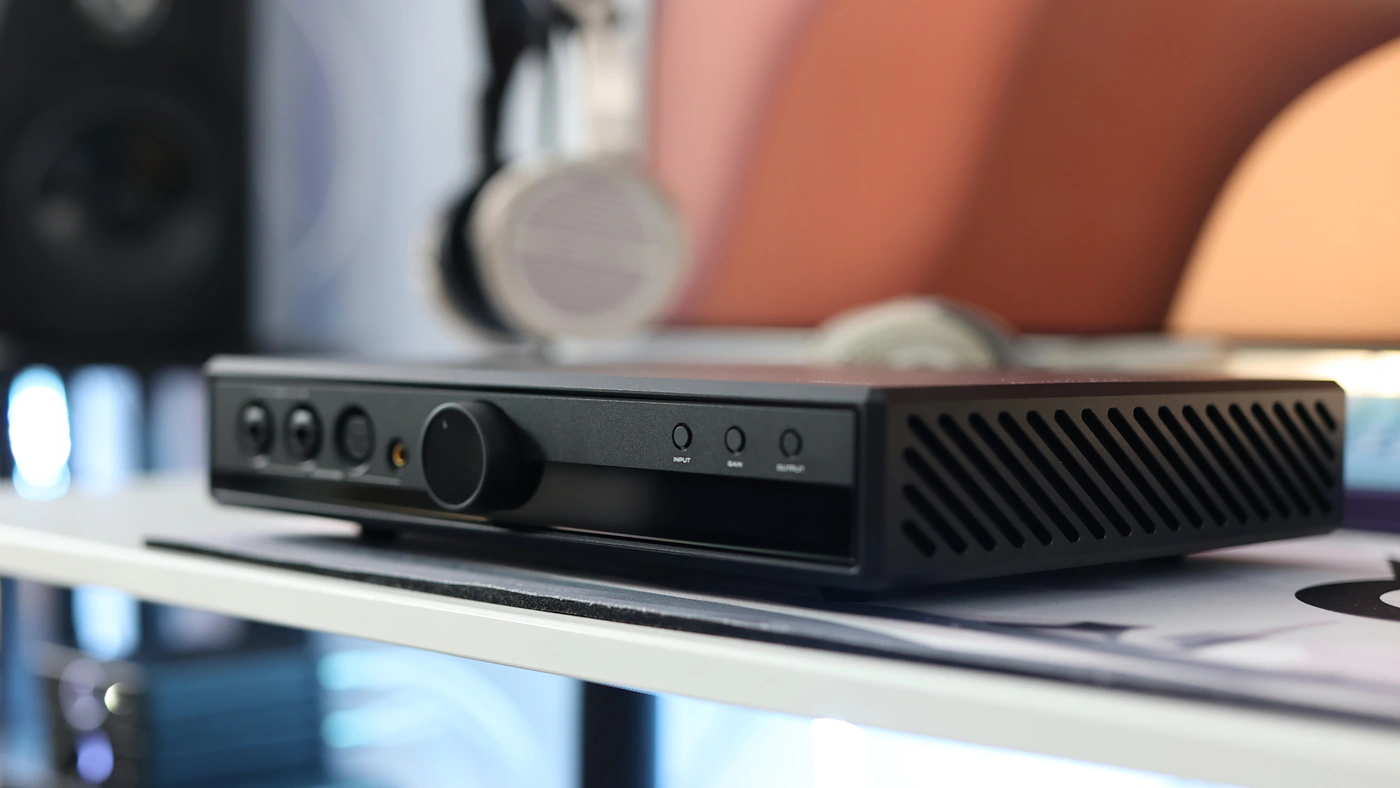
Midrange – I found a tendency that every time I start listening to music using the Prelude I tend to prefer female-led songs, as it brings out the beauty and musicality in those, but male voices sound just as sweet and pleasing. Guitar sounds are juicy, emotional and soul-moving, musical and pleasing to the ear. Synths are expressive and come out clearly, with a smoother texture, but a highly detailed sound and tone. Background guitars are evident, and the lead guitar is generally presented in the same position as the lead voice, really close to the listener, right up in your ear, driving your mind through endless dreams of musical landscapes. HIFIMAN Prelude is a master of definition and precision, it handles complex music exceptionally well, revealing the information present in each layer, and putting everything into a musical, pleasing perspective. A good song to test the whole midrange is HimeHina – WWW, a song that combines a complex layer of two beautiful voices blending together, with echo and special effects, but also dreams, synths and special effects. The lead voices take a central place in the presentation, along with the thick and heavy bass line, while the synths presented in the background are clear and envelop the listener in a sweet and fluid separate song line. For this song, the soundstage is wide and holographic, while the voices are presented as sweetly as I ever heard them, with exceptional emotion and clarity.
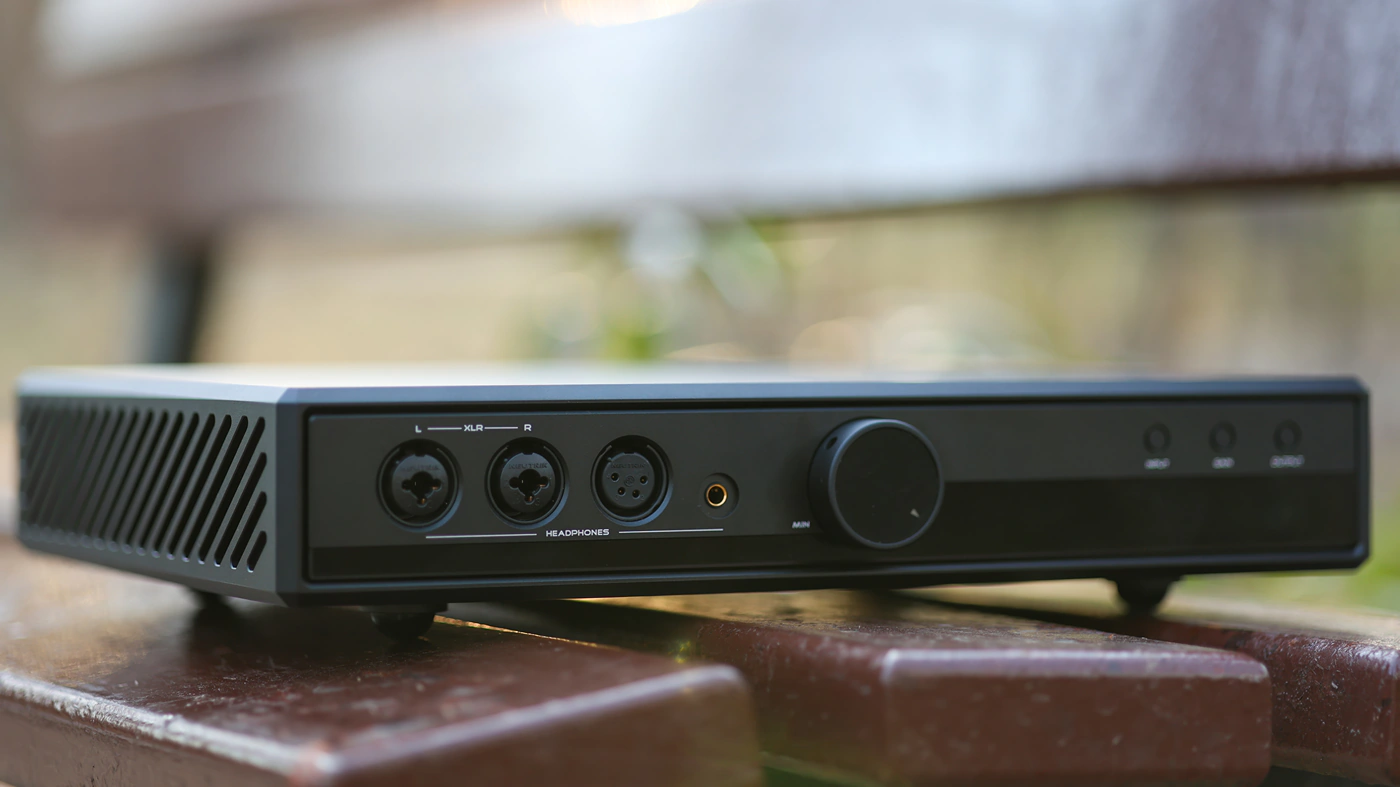
Dynamics / PRaT / Textures – HIFIMAN Prelude has a very characteristic sound that took me a while to get used to, and some planning to describe properly, as it sounds heavy, thick, powerful and punchy, and while textures are not harsh or fatiguing, they are expressive, emotion taking a very important place in the sonics of the Prelude. Dynamics are on the maximum level that I heard to date, exceeding what I consider to be typical, so even dynamically compressed songs such as metal and rock will have certain instruments playing quieter and others playing louder, while classical will have a whole new dimension of dynamics and precision. The texture of the Prelude keeps the bass dense and heavy, the midrange fluid and detailed, revealing and rich, while the treble is smooth, relaxed and easy on the ears. This difference in texturization leads to a very specific sound Prelude has, which is addictive and finally explains why someone would have a stack of a separate DAC and AMP on their desk, the difference from the Serenade is quite high in how each frequency and instrument is presented.
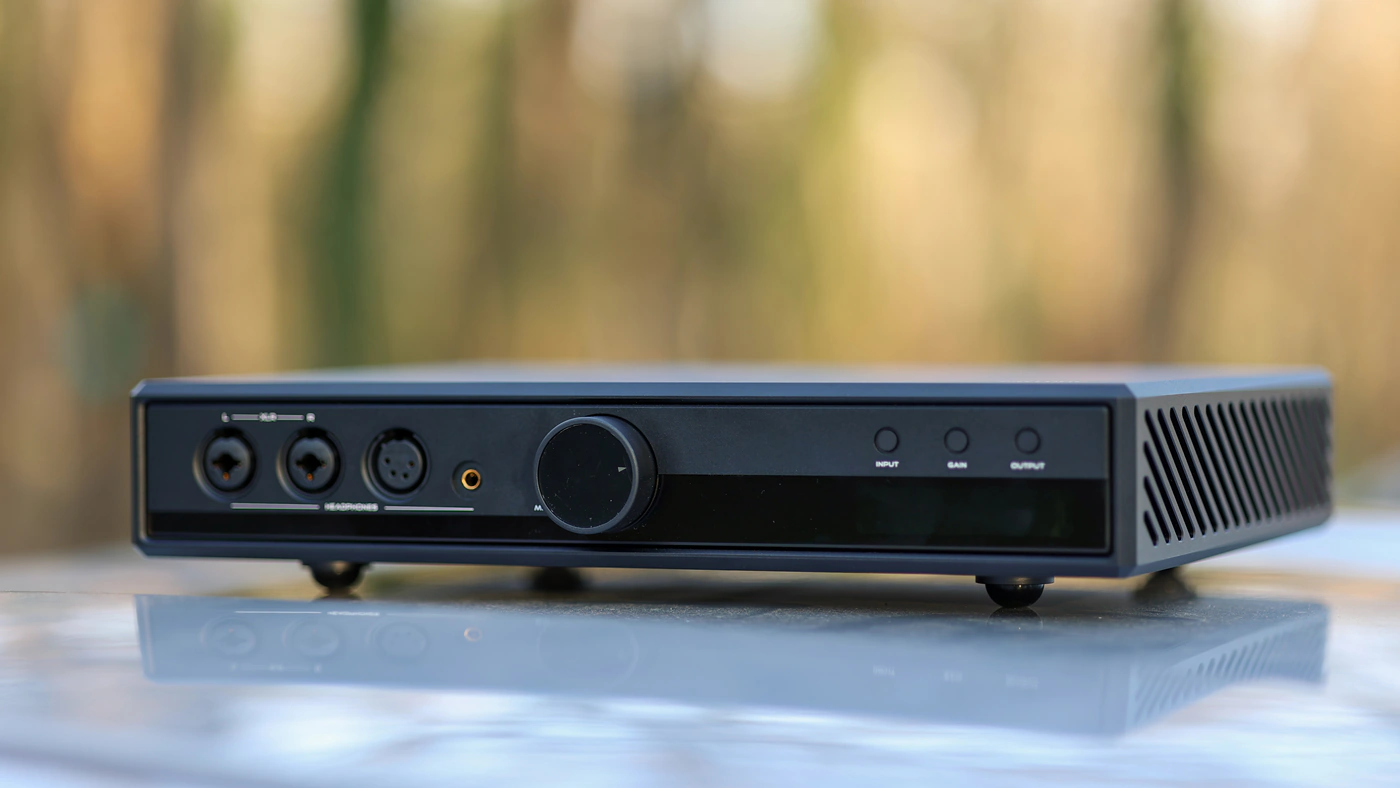
Soundstage – The soundstage as presented by the Prelude is the most precise and well defined soundstage I’ve heard from all the headphones I have paired with it. Prelude has a tendency to bring forward the lead voices, the bass guitar or bass line, and push each layer into its own space, but it creates a fairly rounded and slightly intimate staging which is pleasing and revealing to listen to. The presentation enhances engagement, clarity of each instrument and precision of the sound, creating a refined and sonically pleasing presentation and tuning, sounds forward and direct, like the 1st row of a concert, rather than a listening hall. The Stereo imaging is downright perfect, so for movies, games, and spatially complex music, it sounds beautiful. In fact, Prelude has such a great channel separation and imaging that it kindly reminded me that I was sitting too close to the left speaker when I used it as a preamplifier. I thought for a while that my hearing was stronger in my left ear, until I looked at the speakers and realized that I was not sitting in between them, the whole thing solved once I found the perfect listening spot once again. If an amplifier or DAC has some channel crosstalk, it makes the positioning between the speakers less important, and you will not notice if you’re not sitting quite right in the middle, but Prelude made it instantly obvious.
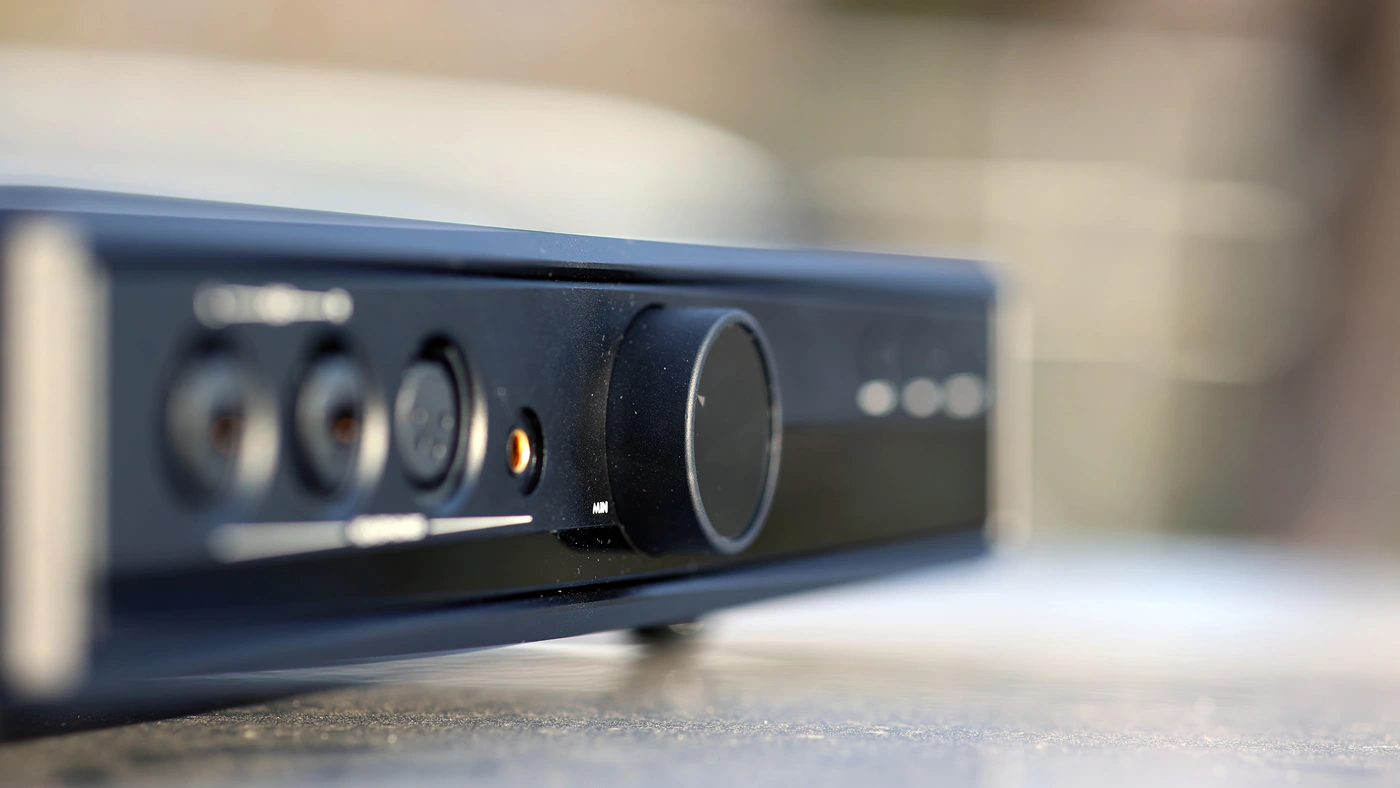
Volume Control – Most Amplifiers will handle lower or higher volume better, having a tendency to lose control at higher volume. HIFIMAN Prelude, just like the Serenade, has what I consider to be top to bottom perfect volume control, with zero variation from volume. In fact, the volume control is so good that I found myself pumping the volume far louder than I normally would, as there still was zero distortion even after surpassing 115 dB with HIFIMAN He1000SE, leading to a listening experience I can only describe as rigorously invigorating, bringing my rock and metal collection to concert levels of engagement and energy. I am talking here about bands like System Of A Dawn and Linkin Park rather than more relaxed ones. Even Metallica’s St. Anger album will stay crisp and clean even when surpassing 12 o’clock with HE1000SE (over 120 dB).
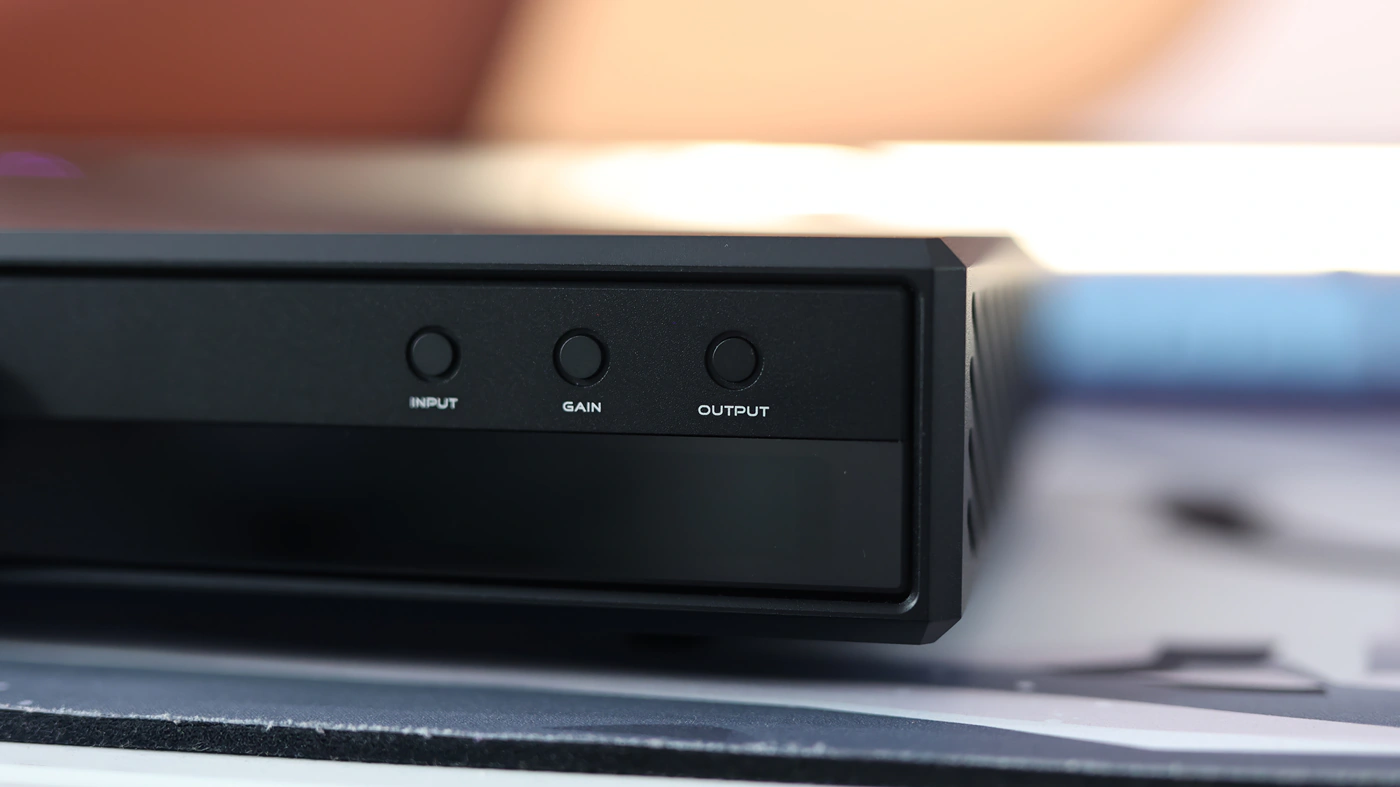
Treble – This is where Prelude completes its tuning and signature, having a smooth, relaxed treble which will put even aggressive metal tracks in the backpack. While the whole midrange and bass is nuanced, emotional and crisp, the treble being relaxed helps keep the tuning listenable and not a aggressive like a caffeinated worker on a 24-hour day job, Prelude sounds refined, mature and keeps in check even peskier tracks which suffer from a poor, bright mastering. Basically, you can expect to hear brilliant and sharp treble with bright music, but a smoother and relaxed top end with most other music styles, including pop and EDM. I noticed that Prelude draws me to listen to more pop, and music led by a female voice, as it takes away any kind of fatigue and allows me to focus on the sweeter, more pleasing parts in music, but the smoother treble also helps with this, as it creates an environment where guitars, pianos and voices bear emotion unbridled by digital glare or hard edges. The takeaway is that while the bass hits hard, the treble is tender and soft, and mids emotional and full, rich and well layered.
Gaming
For a flagship amplifier, gaming is less of a common usage scenario, but as a game developer and fairly enthusiastic gamer, I found that HIFIMAN Prelude actually sounds really impressive, it reveals all the nuanced bassline in games, gives more soul, emotion and fun to all games, plus the really impactful sound is great for action games, fast-paced games, but also for visual novels where the soundtrack is a central element of the game.

The imaging is super clean and well defined, which helps a lot with positioning yourself in a game. The soundstage being more focused and on the slightly intimate side, it creates a dense presentation for games, enhances the engagement and makes you feel right in the action.
Comparisons
For the comparisons included in today’s review I have used either Dethonray Listening M1 or HIFIMAN Serenade to power the Serenade. When comparing the Prelude with a DAC/AMP which does not have an analog input, so where you are forced to hear the DAC AMP sound entirely, I have opted to use the DAC of that DAC/AMP, powering the internal amplifier, and then powering the Prelude. This resulted in an increased accuracy of my impressions, and I did proper volume matching within half a db using a sound meter, measured using larger headphones (to avoid fiddling with IEMS to get the volume matching right). For example, iBasso DX320 MAX Ti does not have an analog input to use an external DAC for it, so I have used it either directly powering headphones and IEMs, or going from DX320 MAX Ti to HIFIMAN Prelude, and using the Prelude as the AMP, and DX320 MAx Ti as the DAC. For Amplifiers like Feliks Euforia I have used the HIFIMAN Serenade or Dethonray Listening M1 as the source DAC for the comparisons.
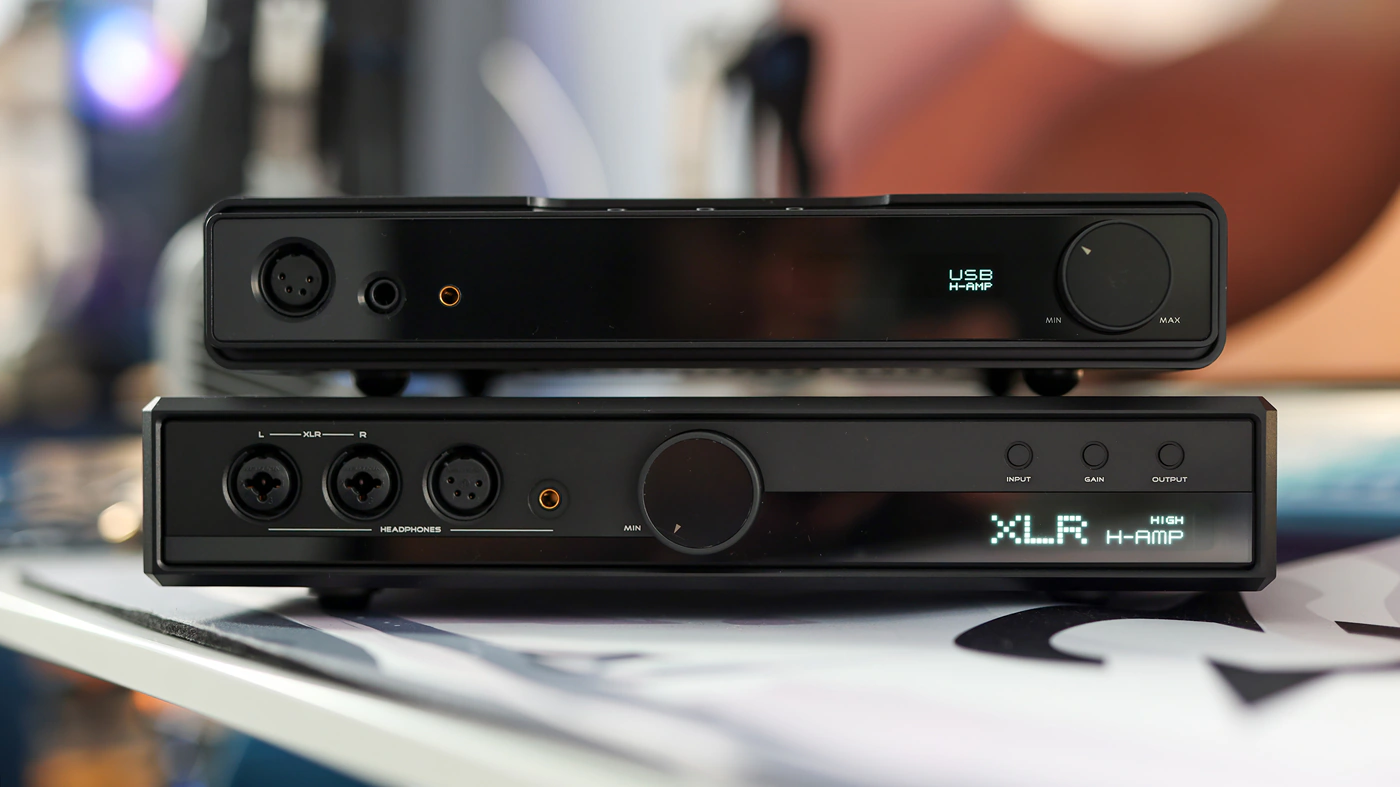
HIFIMAN Prelude vs Feliks Euforia (2499 USD vs 2000 USD)
Build – Euforia is a large amplifier, with tubes, and it has now received an upgrade from Feliks Audio, which we hope to review this year. Euforia only has RCA input, while Prelude has both RCA and XLR inputs and outputs. The RCA inputs on the Felis Audio are inherently noisier, and this is because RCA cables are less prone to noise, and I have a large number of electronics that cause interference really close together to each other. The maximum driving power is higher on the HIFIMAN Prelude. The design on the Feliks Euforia really takes your eyes more, especially with the imposing tubes it presents, and which make you think of Hifi, but both devices are professionally made with no gaps and perfect craftsmanship.

Sound – Sonically, Euforia is a fairly neutral sounding amplifier, while Prelude sounds quite different, much bassier, more dense and deeper, more powerful in the midrange, and it offers a higher degree of instrument layering, a higher resolution, better impact and a more well defined soundstage. Euforia projects music more on the lateral plane, while Prelude keeps you in that forward experience, it sounds a bit more intimate, but keeps you in the middle of the action, resulting in a more engaging listening experience. Despite the Euforia being tube based, it actually has a low THD and the specific tube coloration people mention when reviewing tubes is less evident, both amplifiers eventually sounding similarly rich and comparably clean in the midrange. If you already have dark and smooth sounding headphones, Euforia will deliver a sound that makes them brighter and more open, while for brighter or balanced sounding headphones, Prelude will give them a bold, controlled and powerful bass, plus a sweet and fluid sounding midrange.
HIFIMAN Prelude vs Violectric HPA V340 Amplifier (2499 USD vs 2000 USD)
Build – It is nice to have another high-end amplifier on the list, and HPA V340 has a different input and output list. Although for the Outputs, we have XLR and RCA line outputs, we have only RCA inputs, and for the headphone amplifier part we have only XLR and 6.3mm single ended outputs, while Prelude has XLR Inputs, XLR outputs, 4.4mm balanced outputs, being a more complete Amplifier for both headphones and for desktop usage. The volume wheel of the HPA V340 is a bit more satisfying in particular, but the design of the Prelude feels more high-end and less industrial. V340 has the advantage of driving IEMs with a lower noise floor, but the maximum driving power is quite lower than that of the Prelude, although both should have plenty of power on tap for the headphones that need it, such as HIFIMAN He6SE. Both have no self noise, but as you have only RCA cables for HPA V340, you often run the risk of line induced noise, need pricier cables, and this ends up being a limitation of usage with HPA V340.
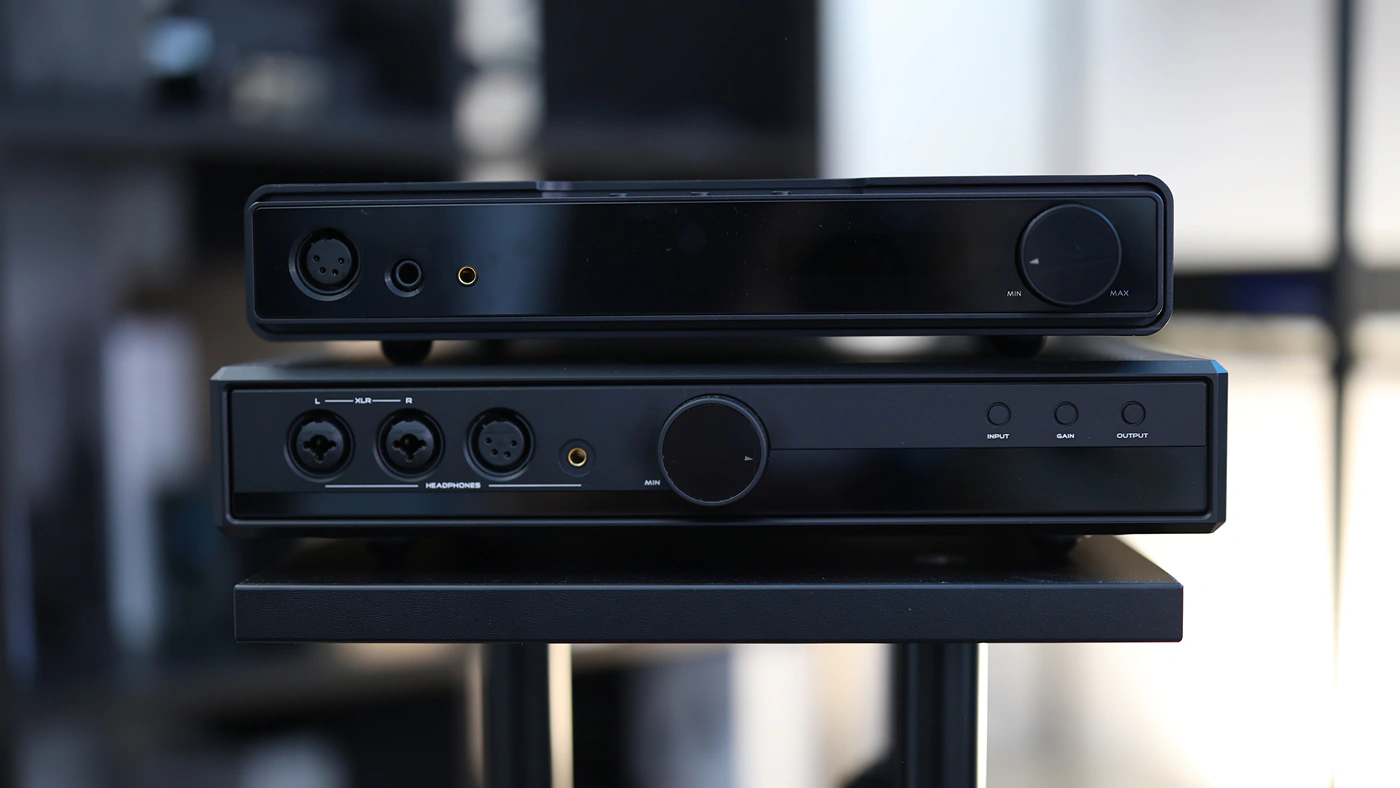
Sound – Sonically, the two amplifiers are different, HPA V340 is very transparent, but neutral, with a sharper, more brilliant sound, but less body less bass and a less smooth sound than the Prelude. There’s a good sense of space with both, but Prelude sounds more defined, has a stronger instrument separation and creates the feeling of stereo imaging more, while V340 expands the soundstage more laterally, while scattering the instruments a bit compared to the Prelude which keeps a dense and precise sound through and through. The bass of the Prelude gives music more body and fullness, it creates the feeling of impact better, so I would recommend it more for balanced and bright sounding headphones, while for really smooth and dark sounding headphones, HPA V340 will open the treble, and tighten the bass.
HIFIMAN Prelude vs iBasso DX320 MAX Ti (2499 USD vs 3499 USD)
Build – DX320 is a portable, but given the price point and popular demand I decided to include it in the comparison list, and the cool part is that DX320 can be used with its own internal headphone amplifier, or be used as a desktop DAC, from either the 3.5mm single ended headphone output, or from the 4.4mm balanced headphone output. Having the driving power of a nuclear plant in your pocket is always welcome and fun, and DX320 Max Ti is basically the crown of portable music players right now, so this is more of a comparison of what can be done with the best portable versus desktop amplifier flagship, and the background noise with IEMs is not existent with DX320 MAX Ti, while Prelude will have hissing, due to having a higher output impedance. The maximum driving power of the DX320 Max ti is lower than that of the Prelude, but out of all the Amplifiers I have in today’s comparison, DX320 Max Ti is the only one who can provide actually excellent control, depth and impact for HE1000SE and all the other hard to drive headphones, thanks to smart engineering and a good implementation from ibasso. There are many things to consider, and many folks simply don’t need a portable with so much power, but DX320 Max Ti is very capable as a unit.
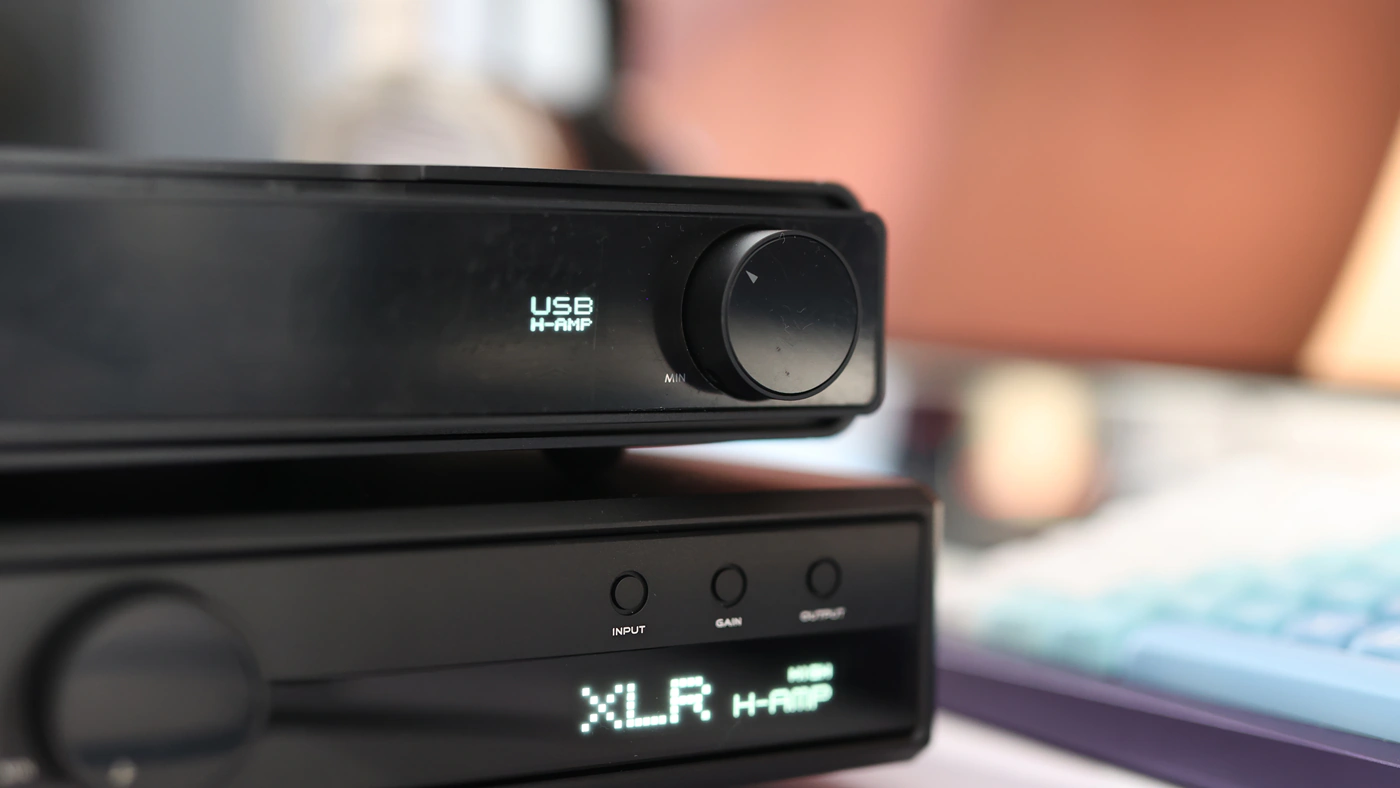
Sound – Sonically, the two are similar in many ways, both have a lush sound, a good bass reproducing and a clean treble, but DX320 Max Ti has a softer impact, while Prelude sounds harder in the impact, more dense and creates more instrument separation and layering. The soundstage of the DX320 Max Ti is wider, and more expansive, both have outstanding dynamics and an emotional sounding midrange, plus a smoother treble. Transparency is a bit higher on DX320 Max Ti which has less of a specific sound, while Prelude has a more specific tuning, Prelude brings the bassline more to the front with all music, while DX320 Max Ti follows the original recording more, showing how the song was mixed and mastered a bit more. The differences are not night and day, they are flavors. I would say that DX320 Max Ti sounds a bit wider, more neutral, and a bit softer, while Prelude sounds denser, tighter, warmer, bassier, and warmer in the bass and midrange. What I know for sure is that with most IEMs and headphones you’d be sonically happy with either, and should purchase the product you need, a DAP or a high-end flagship AMP. Using DX320 MAx Ti for a stereo system is possible, and for it to act as the DAC, but Prelude being the Preamp will make more sense if you want to implement it in a desktop setup.
HIFIMAN Prelude vs Smyth A16 Realiser (2499 USD vs 4000 USD)
Build – Smyth a16 is another DAC which has a headphone amplifier, but no audio inputs. Although the back of the A16 has one of the largest number of inputs and outputs, it does not have a balanced XLR input, so it is a bit noisy when used as a DAC, and it relies on DSP to create its sound, compared to most DACs we have that rely on the sonic design alone to produce their sound. The headphone amplifier designed in the Prelude is far stronger, with more driving power, a lower noise and better control, especially at higher volumes. Smyth A16 offers a sonic DSP processing which allows you to have head tracking, a novelty feature, but the soundstage of the Prelude has higher definition and better layering, with a higher degree of instrument separation.
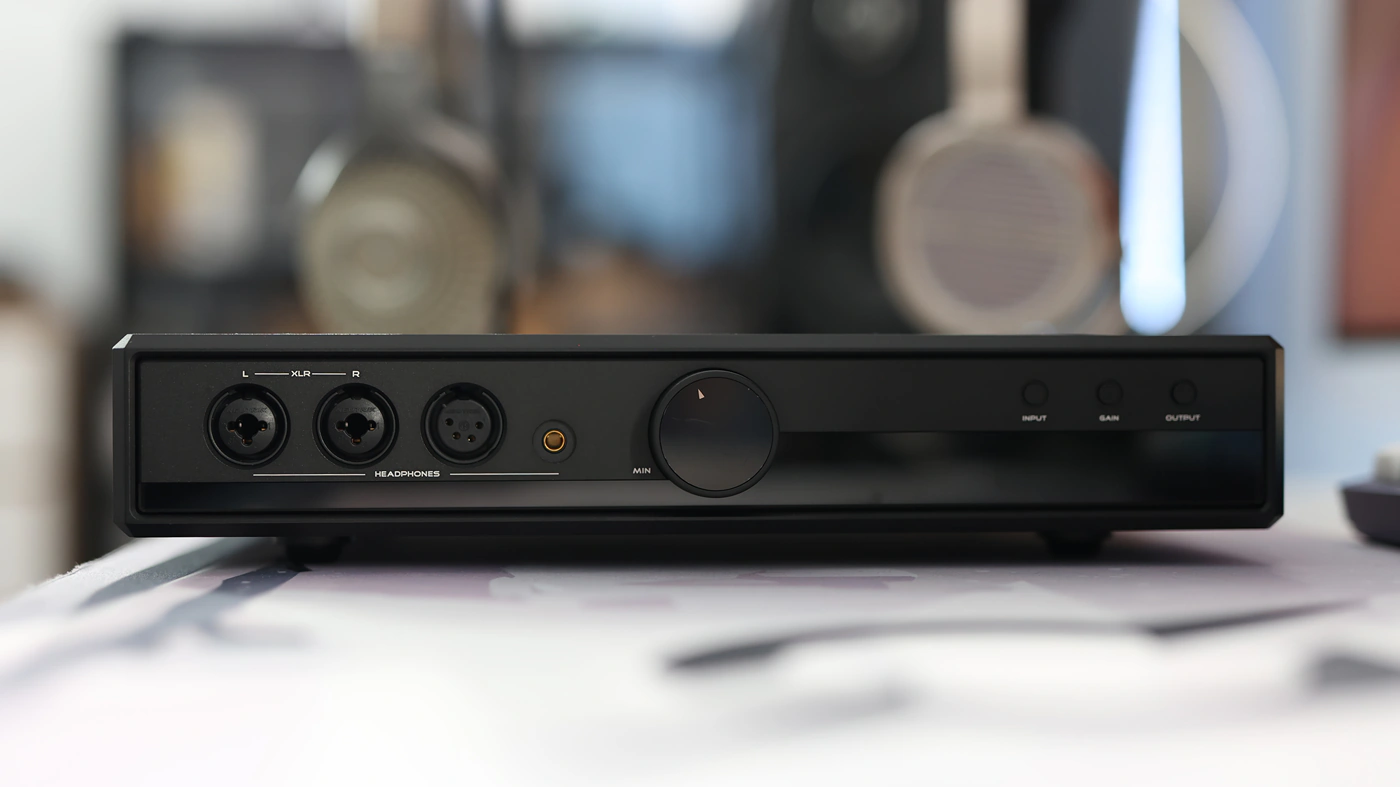
Sound – Sonically, using DSP can provide some really interesting results with A16, but it is held back by the fact it was designed only around one or two headphones, and it doesn’t have quite enough driving power for all the others, for example HE1000SE sounding far more natural, cleaner, and having a far lower distortion at high volumes with the Prelude. With IEMs, Prelude has a lower hissing and lower distortion, lower noise too, being a better headphone AMP. The sound of the Prelude is deeper, has a more thunderous bass, better refinement and a higher degree of clarity, plus better control at both low and high volumes. Smyth A16 can go for a good bass, with DSP, but it loses control if you push it too hard, as it doesn’t have the power to keep planar magnetic headphones under control.
HIFIMAN Prelude vs Audio Analogue AAdac (2499 USD vs 4000 USD)
Build – AAdac is both a great headphone amplifier, but above everything, it is a high-end DAC for stereo systems, and it does not include audio input, so it will be the DAC in this comparison for both amplifiers (its internal amplifier and HIFIMAN Prelude). A system composed of HIFIMAN Serenade and Prelude is more affordable than purchasing the AAdac alone, and technically you have the advantage of a fully balanced headphone amplifier with the Prelude, while AAdac does not have a balanced headphone amplifier. With IEMs, HIFIMAN Prelude has a lower noise floor and lower hissing, and with headphones, Prelude has a much higher driving power, much higher control and lower distortion, higher volume control and just a better headphone amplifier part embedded in the build.
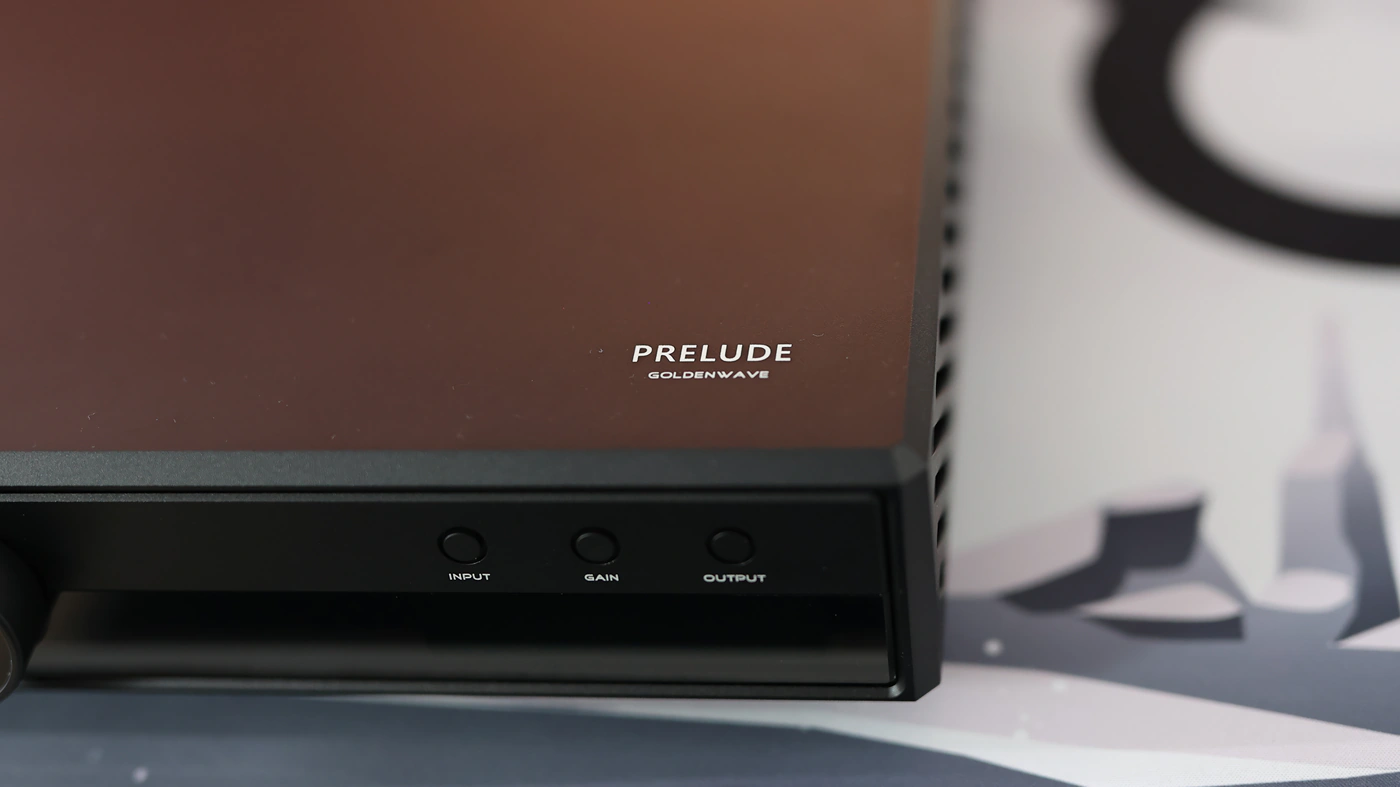
Sound – This naturally results in a different sonic performance too, as AAdac loses control of the bass easily, sounds sharp and bright with little substance and body to music, compared to the Prelude which sounds full, deep and impactful, presents more bass, a higher definition and more detail to each layer of music, and a higher dynamic range. The dynamic range of the AAdac was one of its highlights, but as a headphone amplifier, Prelude has a considerably higher dynamic range, a smoother and less edgy, less fatiguing sounding treble. Overall, for most headphones and IEMs HIFIMAN Prelude does a better job, although it does need a DAC to work, and AAdac is still a great DAC, although HIFIMAN Serenade costs one forth the price and sounds more vivid and a bit more engaging.
Pairings
For the pairings today I have been using a collection of sources, including Dethonray Listening M1, HIFIMAN Serenade, SMSL DO200 PRO, HIFIMAN EF600, JDS Labs Element III Mk2 Boosted, and Aune S9c PRO. All of those DACs have a great sound and synergy with the Prelude, but as this review has been one of the most extensive ones I’ve written, and span over the course of months of experiments, I kept changing the DACs, too, which helped me understand better how the amp itself sounds like, without the influence of the DAC. With IEMs and even with headphones, you typically need to stay below 12 o’clock, sometimes below 10 o’clock and still get very loud, as the difference between High Gain and Low Gain is fairly modest.
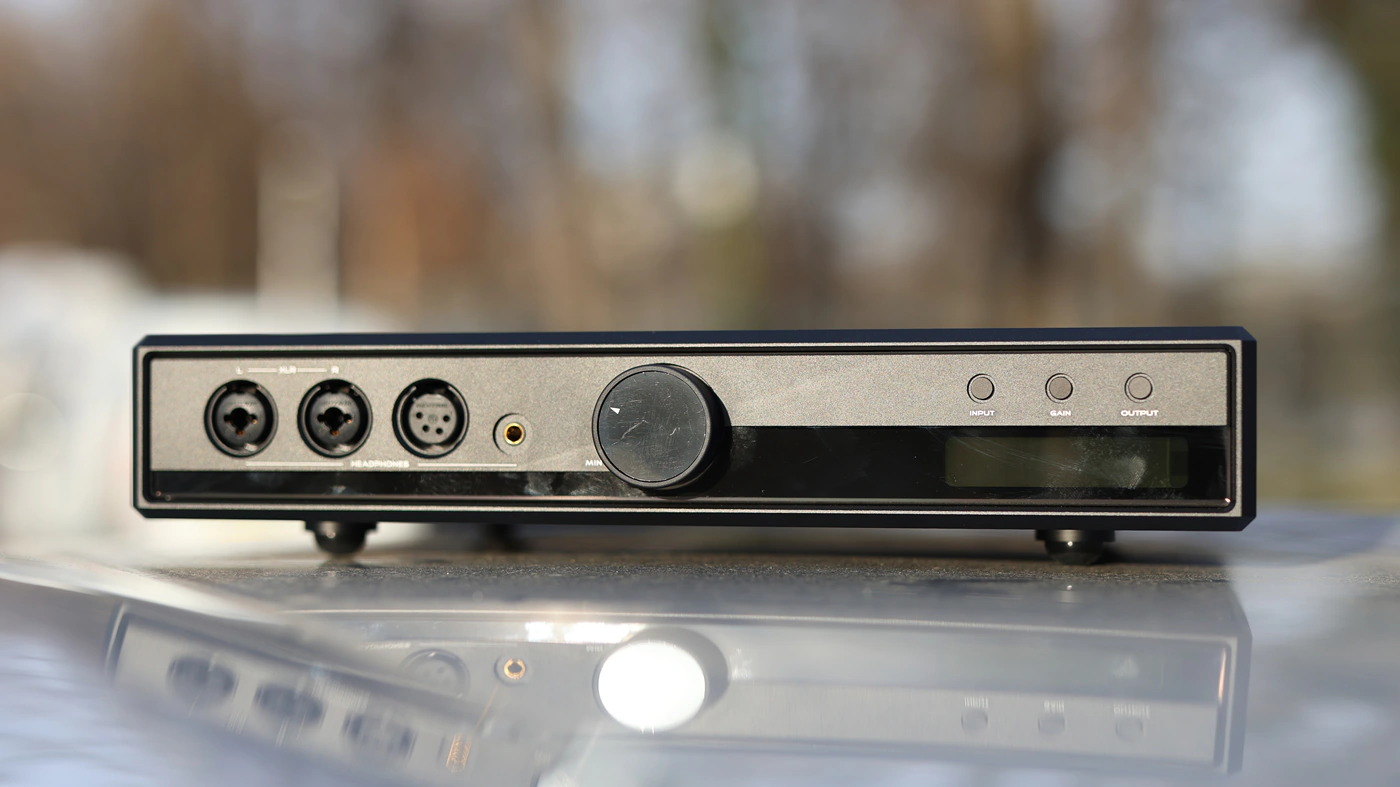
HIFIMAN Prelude + HIFIMAN HE1000SE (2499 USD vs 2000 USD) – Easily one of my favorite pairings, I actually often found myself brining the sound of the Prelude way louder than I normally would with most other AMPs, as Prelude really puts the music into HE1000SE, but keeps out the distortions, keeps out the harder edges, and takes away the sharper sound HE1000SE is known for. This one Amplifier makes me incredibly happy every time I hear it driving the HE1000SE, it gives them a soul and body to carry that soul as well. This is the deepest and thickest, most controlled I have heard the HE1000SE sounding to date.
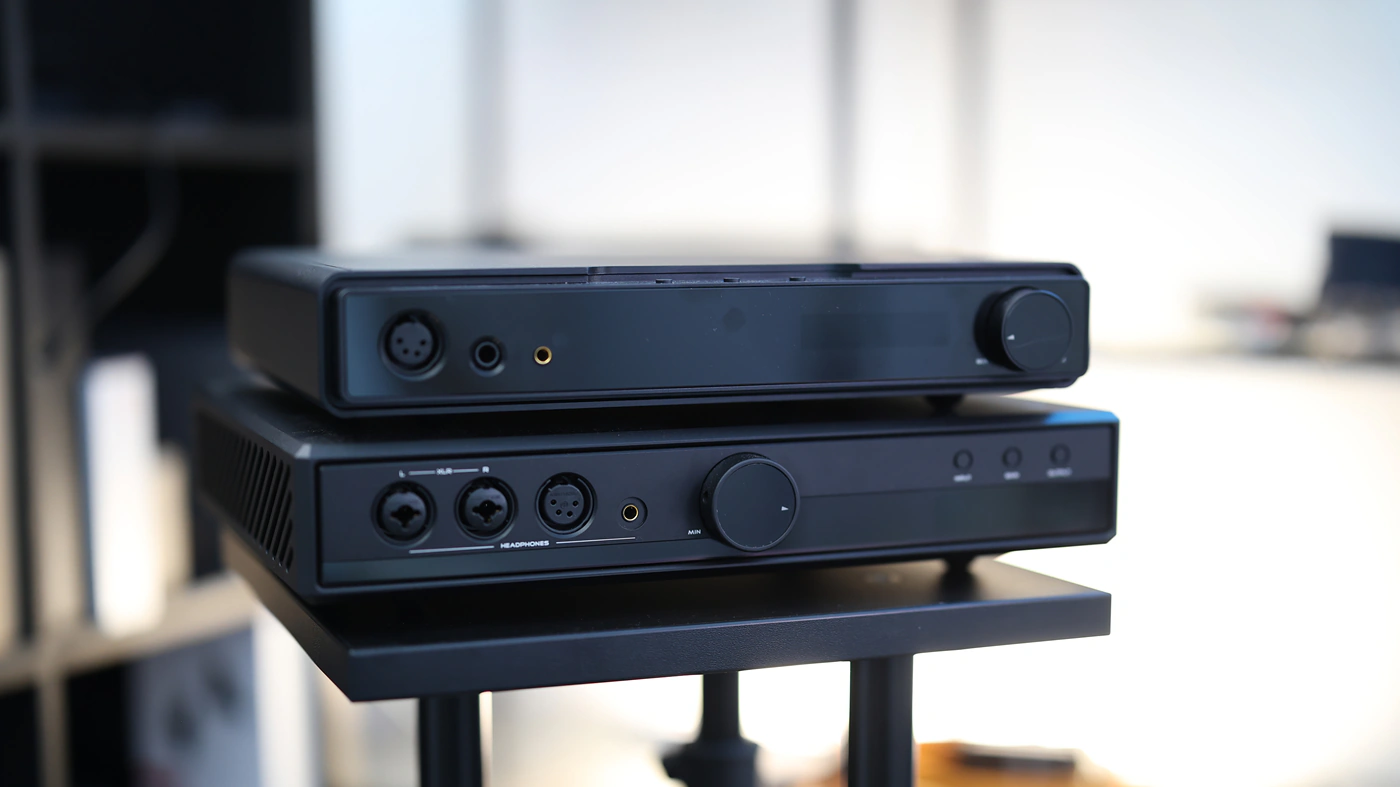
HIFIMAN Prelude + Sennheiser Ie900 (2499 USD vs 1499 USD) – Although the slight hissing in the background will stop you listening to perfect silence, it doesn’t really affect listening to music in any way, and Ie900 is always on my desk for music work, so I can say that Prelude gives them a really thick, punchy and impactful bass, a dense and thick body, plus a sharp, brilliant treble, with a musical, smooth midrange. The presentation sounds detailed and clean, with an emotional and impressive instrument separation and definition.

HIFIMAN Prelude + Soundz Avant (2499 USD vs 1390 USD) – This was a pairing I was a bit hesitant to try, as Prelude has huge driving power, and Avant is an all Balanced Armature design, so anything could have gone wrong, but only a bit of background hissing is audible with no music playing. Happily, the pairing works really well together, the sound is engaging, dynamic, punchy and has a deep, powerful bass. The treble is on the smoother side, but the midrange is clean and detailed, really impressive in how rich and full each instrument sounds, plus how sweet female voices are presented.
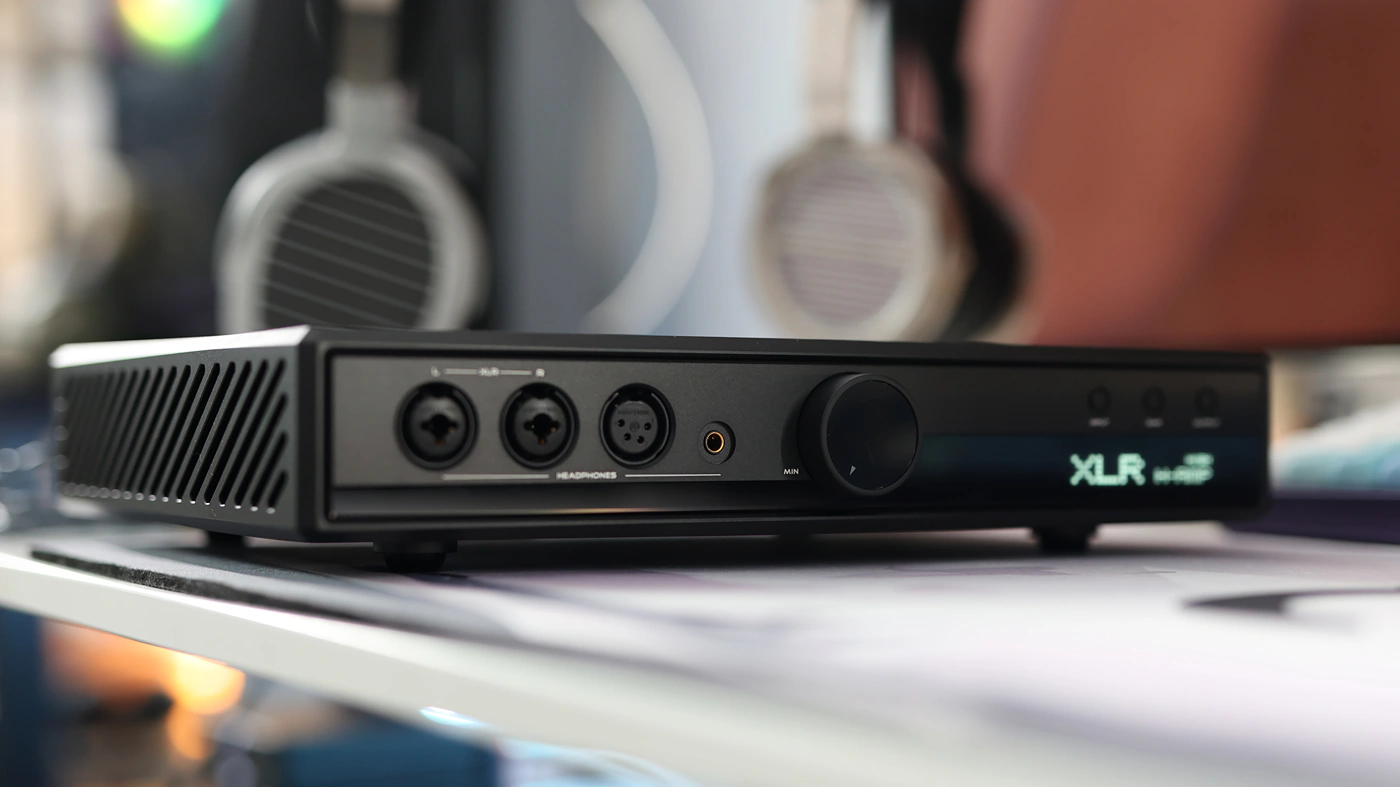
HIFIMAN Prelude + Campfire Bonneville (2499 USD vs 1390 USD) – Bonneville becomes far deeper sounding and more bassy, impactful and dynamic, all while steering away from enhancing the power of the treble, which can already be strong. I find that Prelude is quite perfect with IEMs that sound bright and sharp, as it has a smoother treble and a relaxed treble, but still keeps the punchy bass intact. Bonneville is already detailed and revealing, but Prelude enhances layering and instrument definition, each musical note is more cohesive and sounds more like the real thing, the control over a hybrid IEM being excellent.
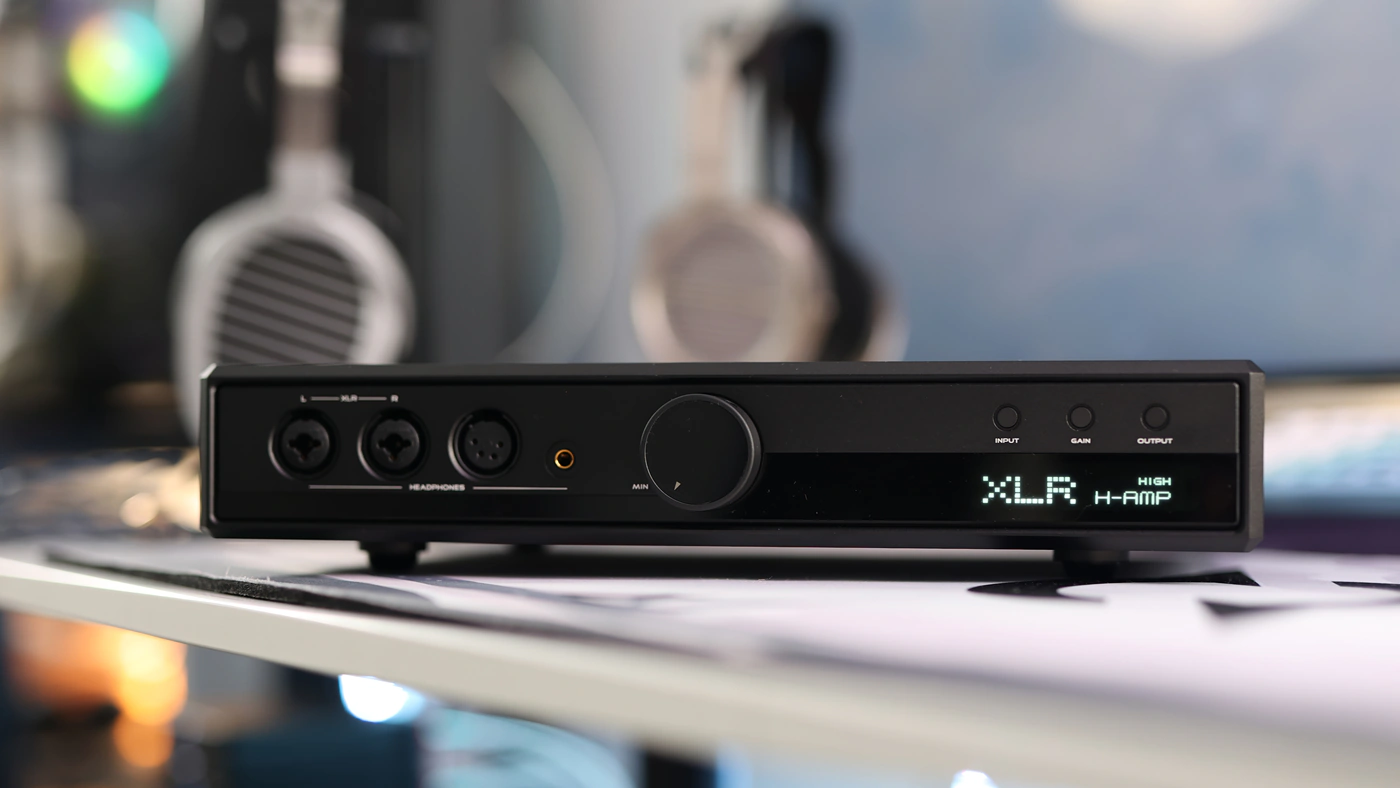
HIFIMAN Prelude + Audeze LCD-5 (2499 USD vs 4500 USD) – Audeze LCD-5 is one of the hardest headphones to drive and master from my entire collection, it simply needs power and a good source to actually shine and reveal the bass and body it is capable of, and HIFIMAN Preludetakes the spotlight, being currently the best amplifier to power them, giving LCD-5 the most impact, body and the strongest bassline that I’ve ever heard from them. Not only this, but it strengthens the layering and instrument separation of an already precise headphone, creating what I would consider to be the perfect sounding match-up, with nothing coming quite close to the resolution and raw impact of the pairing, LCD-5 being a scary good headphone by itself, the only one I’ve heard to date that comes close being the Susvara which I hope to review more fully in the near future, and compare it properly to LCD-5 as well.
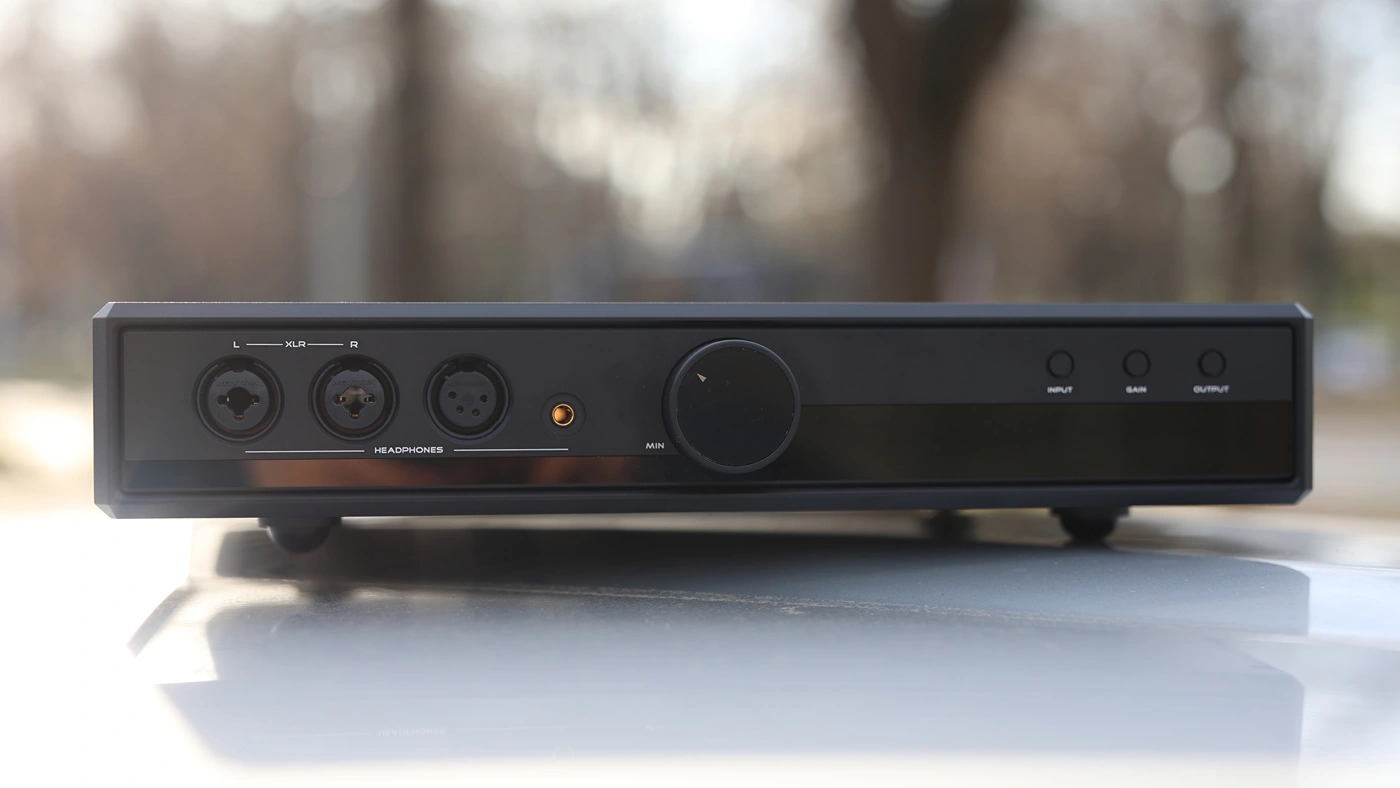
HIFIMAN Prelude + Crosszone CZ-8a Enhanced (2499 USD vs 1700 USD) – CZ-8a Enhanced is one of the most needy headphones I have in my collection, and I am willing to say that they always felt underpowered compared to the kind of sound Prelude is able to push into them. You will need the special Crosszone balanced cable to power them, but the result is the deepest, smoothest sound I have ever heard from CZ-8a Enhanced. The midrange is far more natural and controlled, the peakiness seems to be gone, and CZ-8a sounds far more natural and deeper, more dense and more cohesive than when powered from basically any other amplifier, leading to what I would consider to be the most pleasing listening experience you could get from them.
Value and Conclusion
The value of the Serenade was clearly a pure insane deal, but the value of the Prelude is actually a slightly more complicated subject. As Prelude is an amplifier, it requires a DAC to create sound, and it needs a high-end DAC to actually sound good, so if you’re willing to invest in a proper DAC you increase the cost of the setup. Even if the performance is much higher than all of the competition, it is a flagship class, high-end product, and you can get a better deal with the Serenade, unless you’re pursuing the ultimate sound system, a situation in which the Prelude starts to make much more sense.
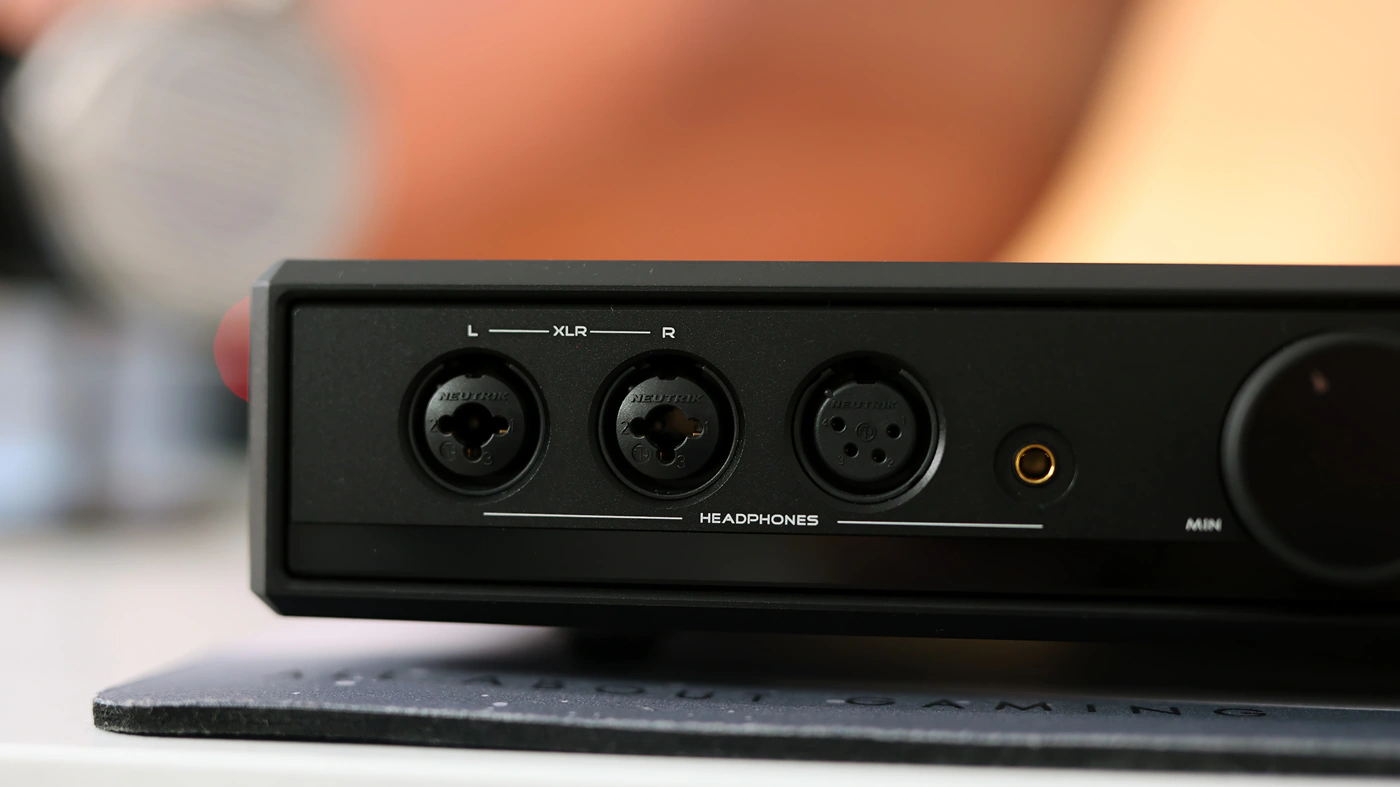
Before the end of today’s review, I want to add the HIFIMAN Prelude to the Audiophile-Heaven Hall Of Fame, for being one of the best amplifiers I heard to date, for sounding the smoothest, deepest and most powerful of them all, and having a tuning that far surpasses the power and impact that everything before it came to deliver.
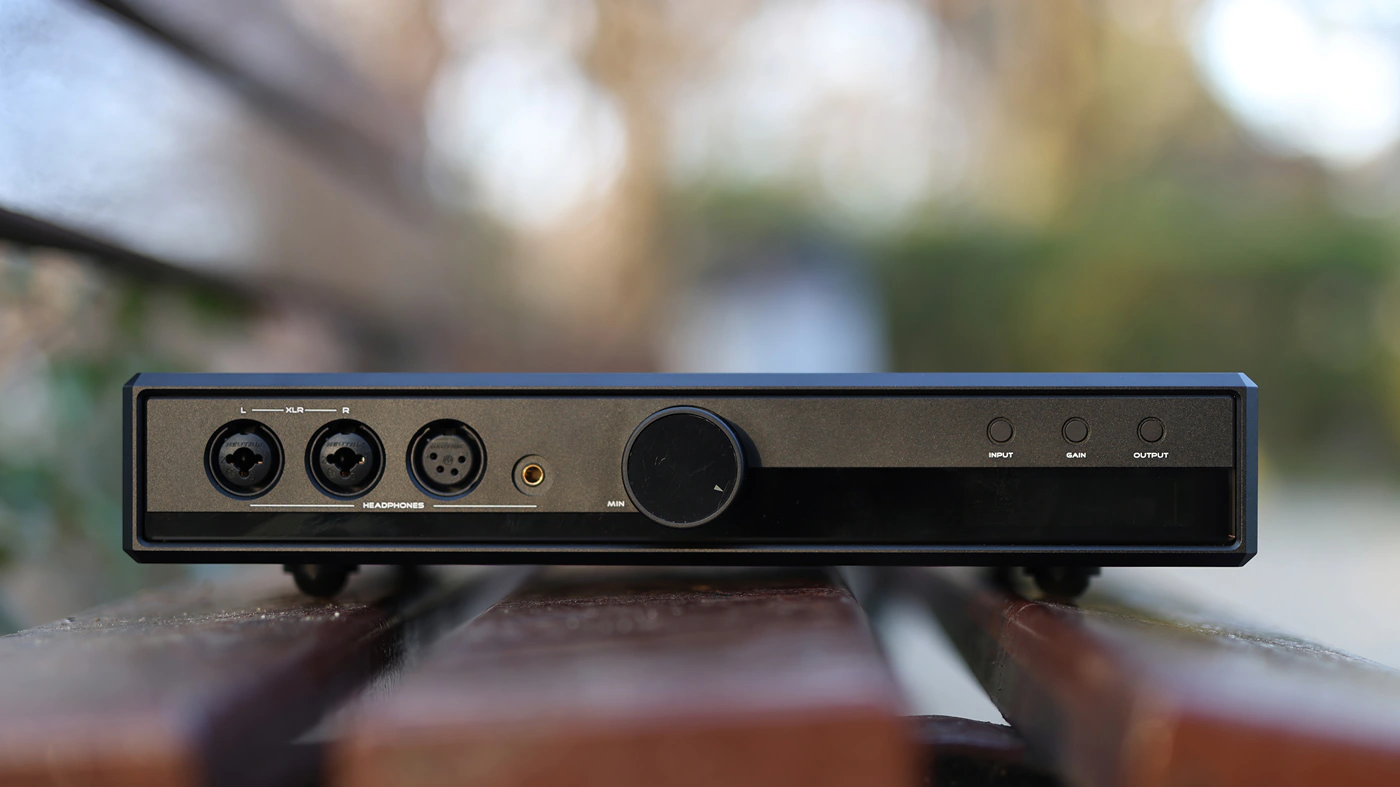
At the end of the day, if you want the ultimate headphone amplifier, and the ultimate preamplifier for a stereo system, if you want to hear pure magic, and a lush, warm, bassy sound with full depth and impact, HIFIMAN Goldenwave Prelude is one of the best amplifiers the company made, and one of the best amplifiers on the market today, so for a full flagship experience, it is a fully recommended purchase, and a ten out of ten I can wholeheartedly recommend to anyone seeking pure Nirvana.
Product Link
You can grab one here – https://amzn.to/3z8zQVT
--- Please remember to stay safe, and always have fun while listening to music!---
- If you have a dime to spare, please donate, and help us! It would make the day brighter for me and my wife-
Full Playlist used for this review
We listened to more songs than those named in this playlist, but those are excellent for identifying a sonic signature. I recommend trying most of the songs from this playlist, especially if you’re searching for new music! The playlists are different for Spotify, Tidal and Youtube, and based on the songs I enjoy and are available on each!
https://www.youtube.com/playlist?list=PL_cjBXGmwSHSdGcwuc_bKbBDGHL4QvYBu
https://open.spotify.com/playlist/5J3oloz8Riy9LxEGenOjQ0?si=979ba4f082414be7
https://tidal.com/browse/playlist/330fd544-8e5b-4839-bd35-676b2edbb3d5
--- Contact Us ---





